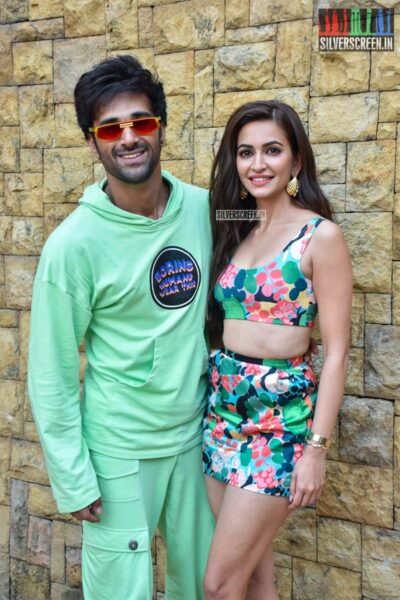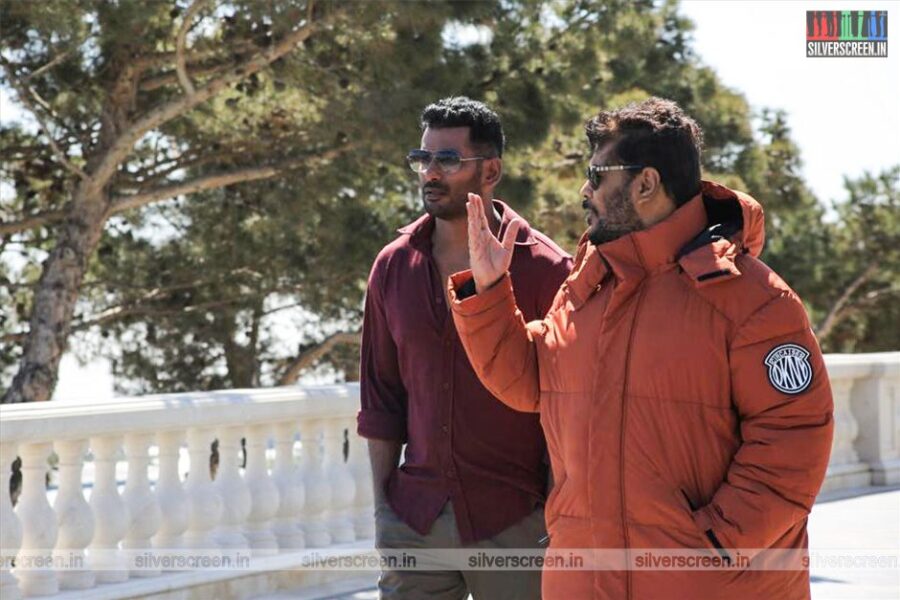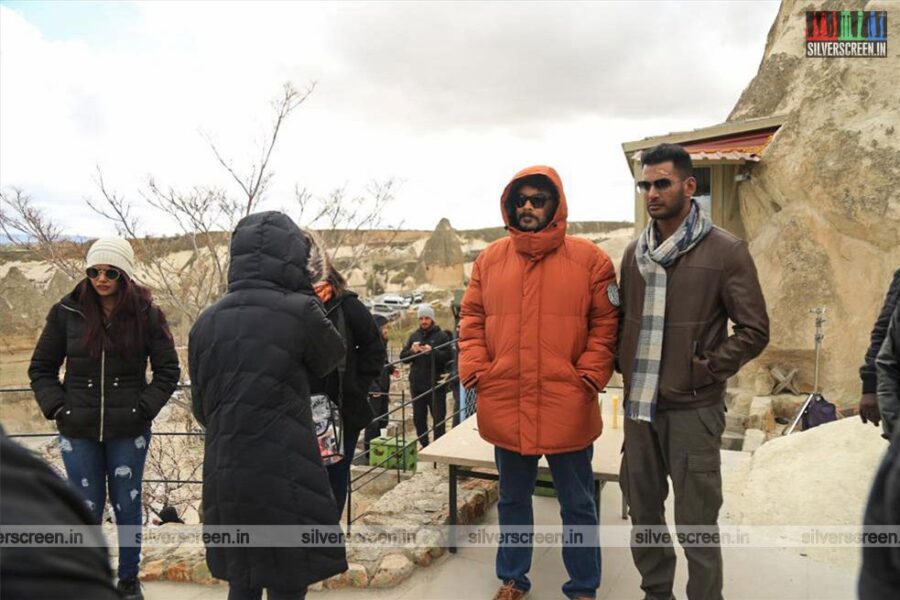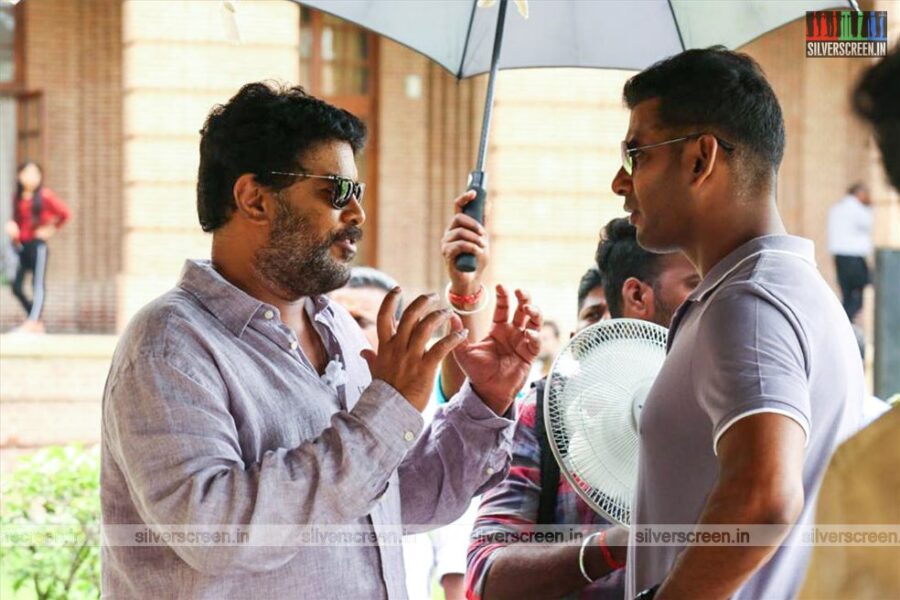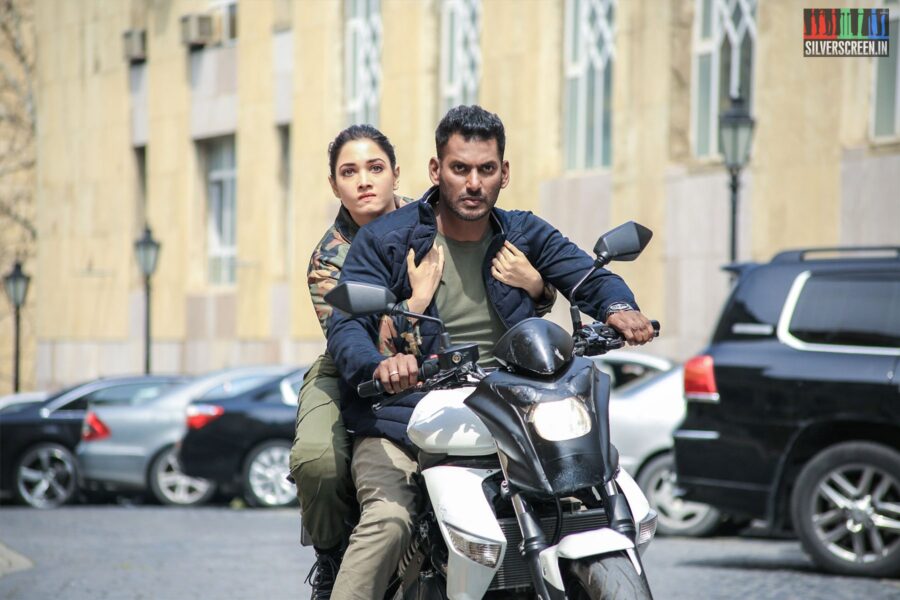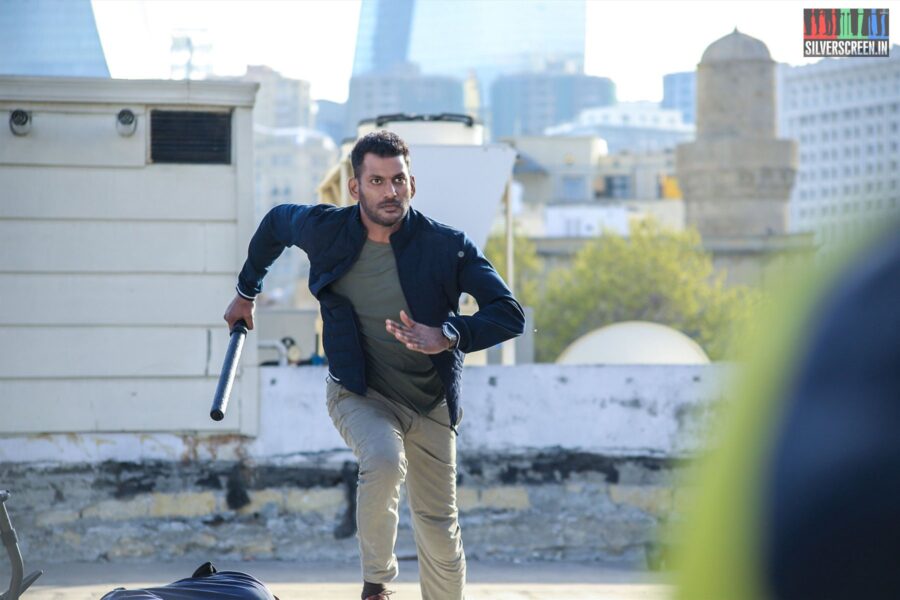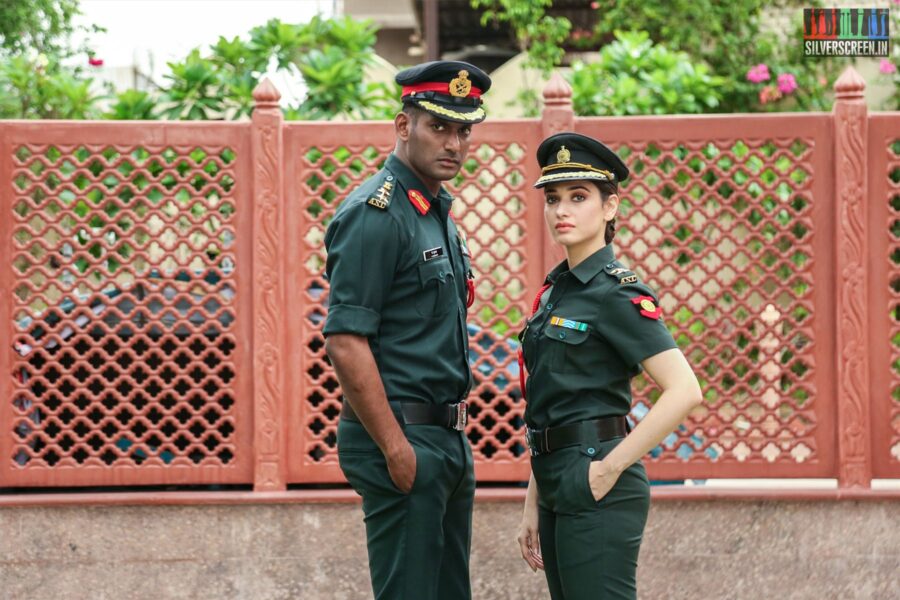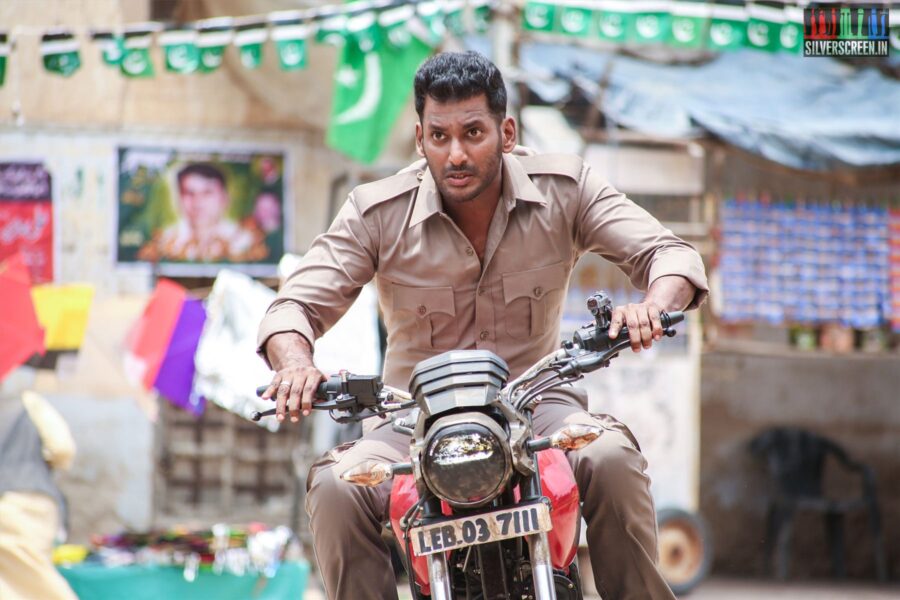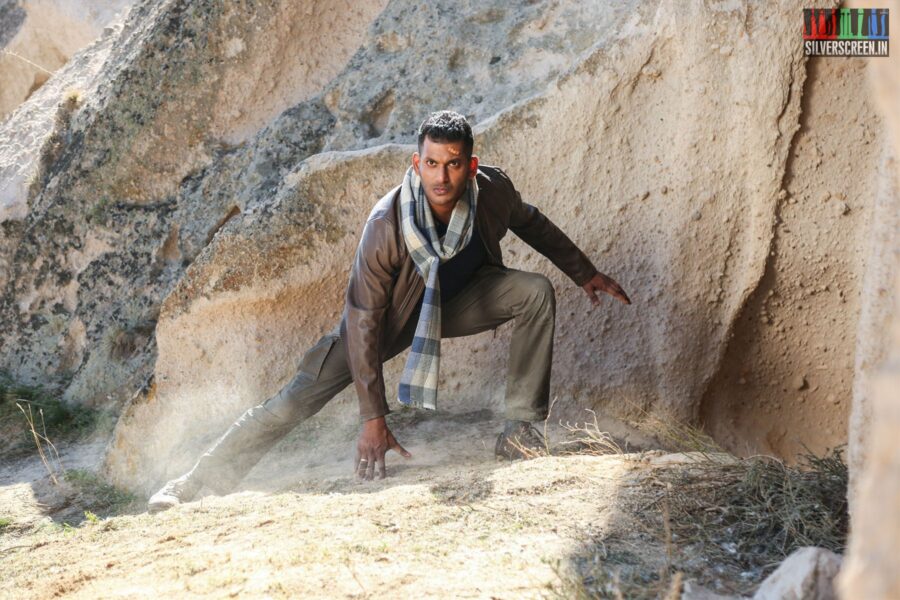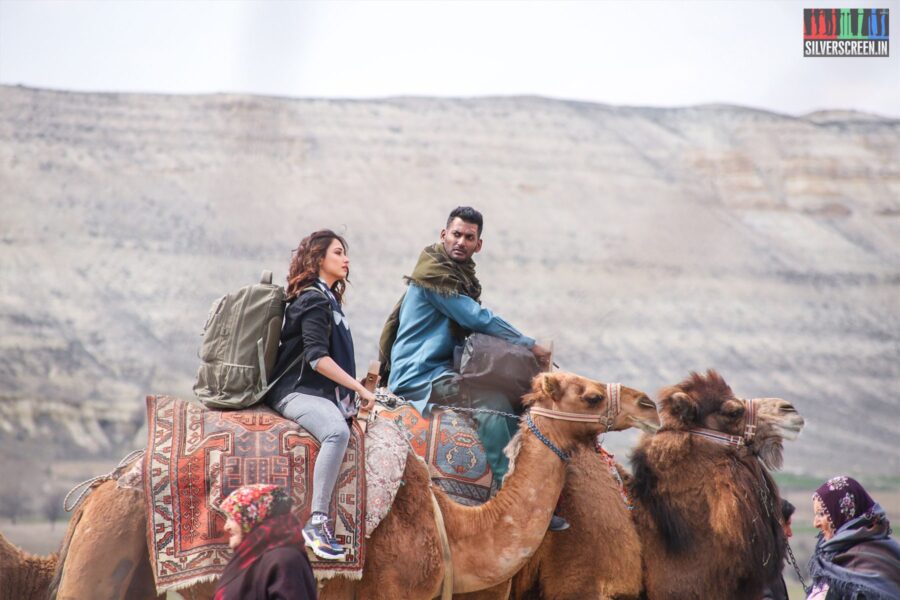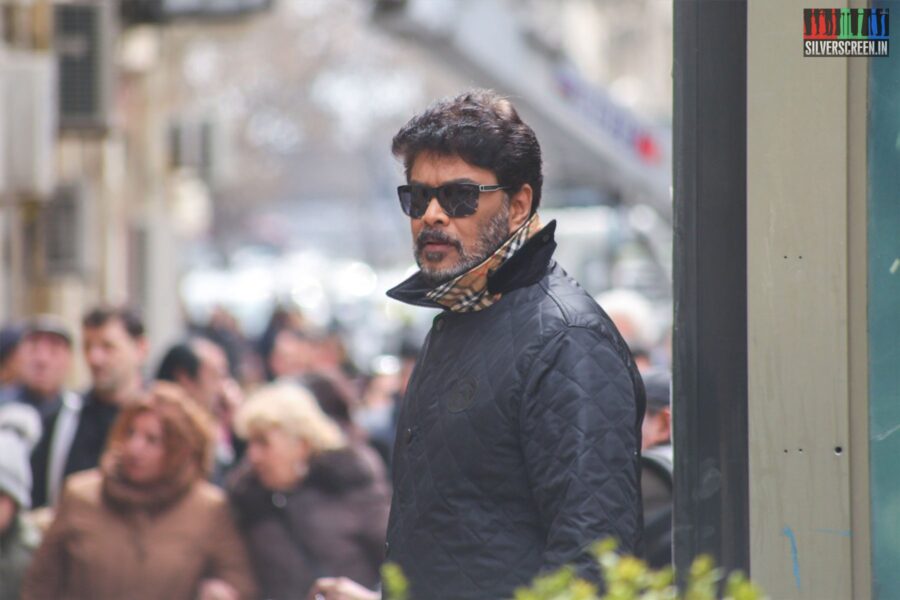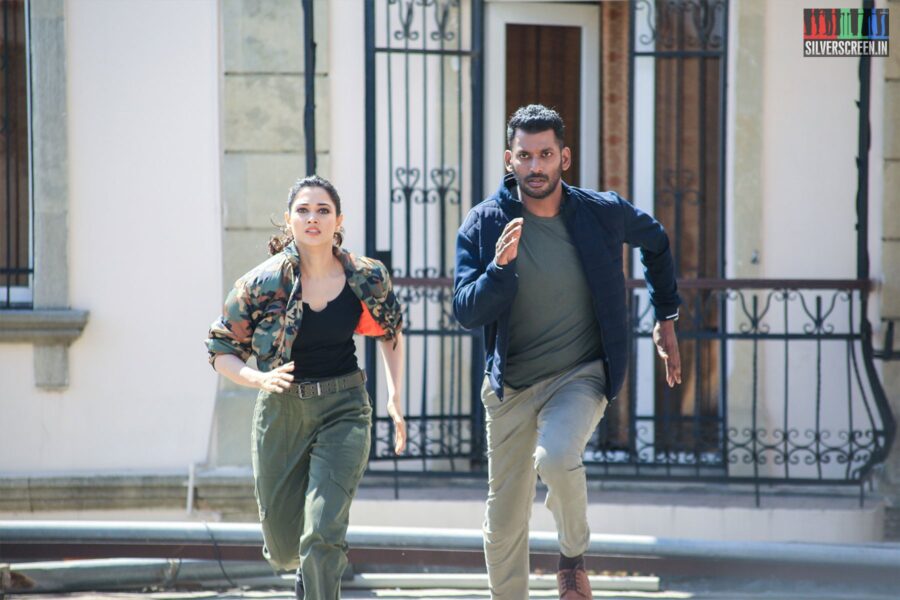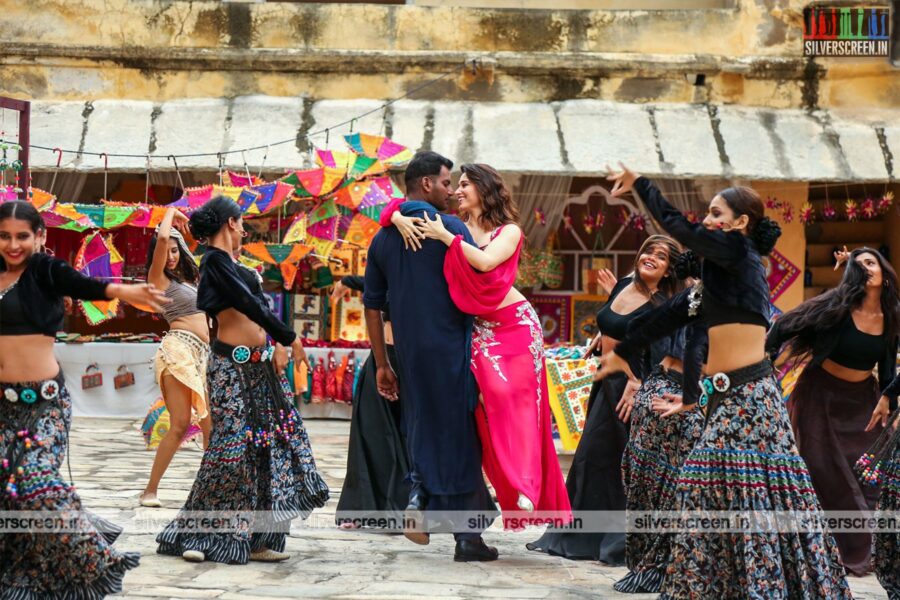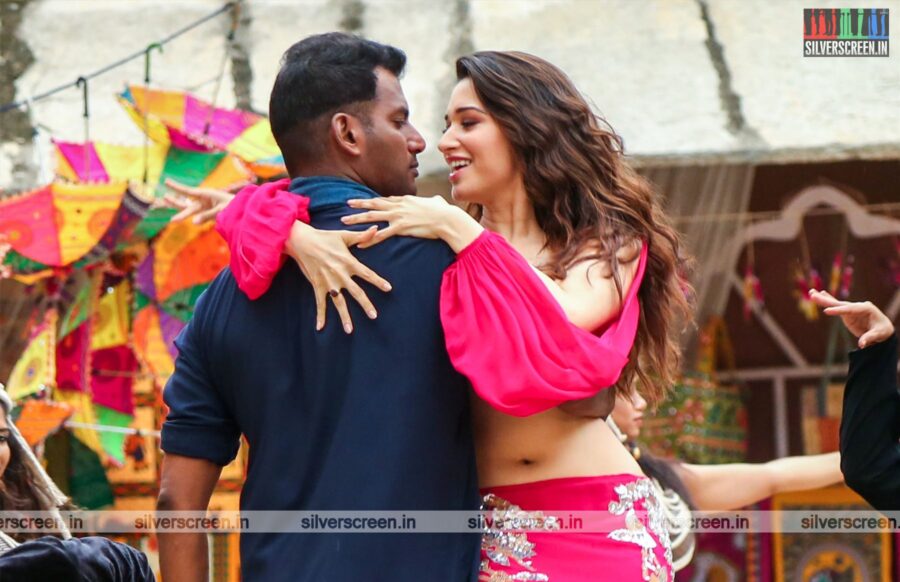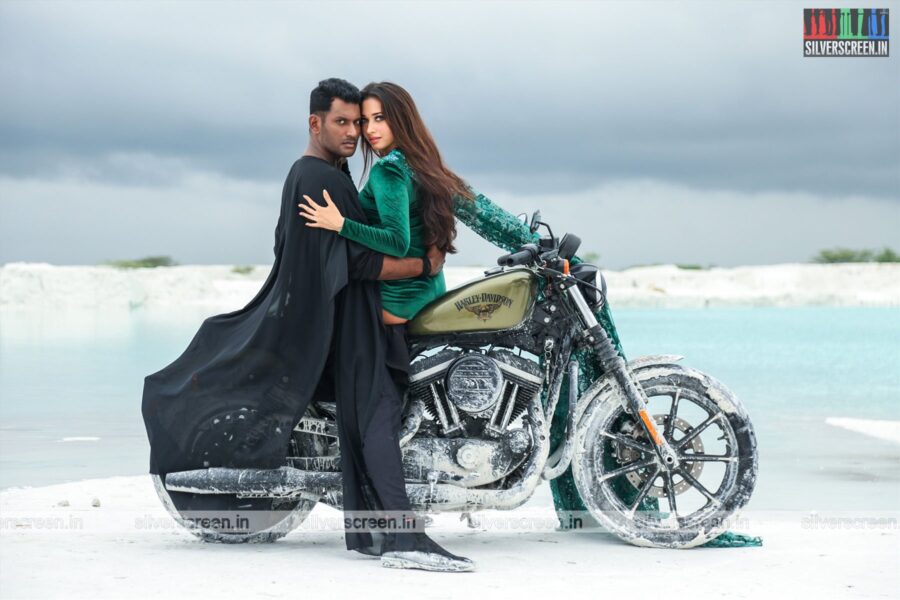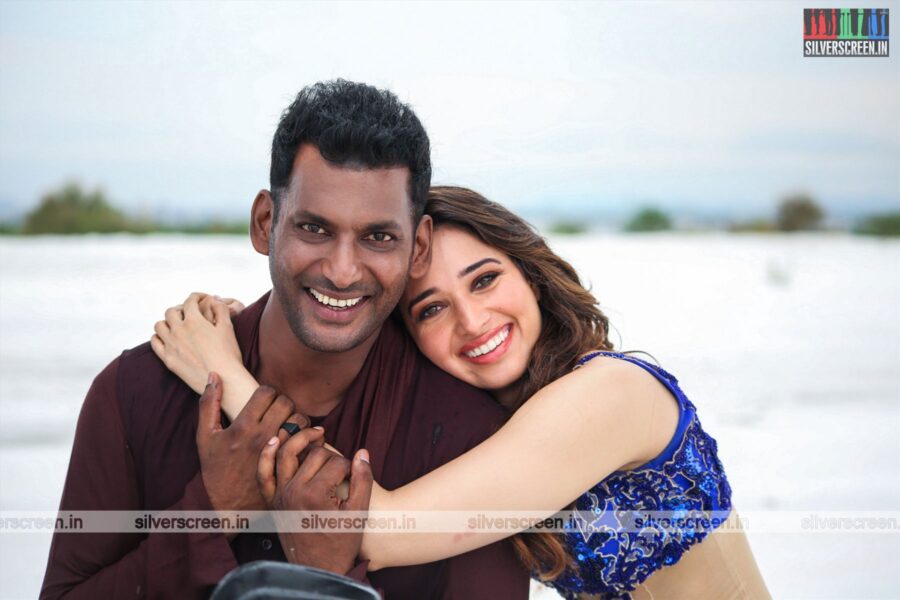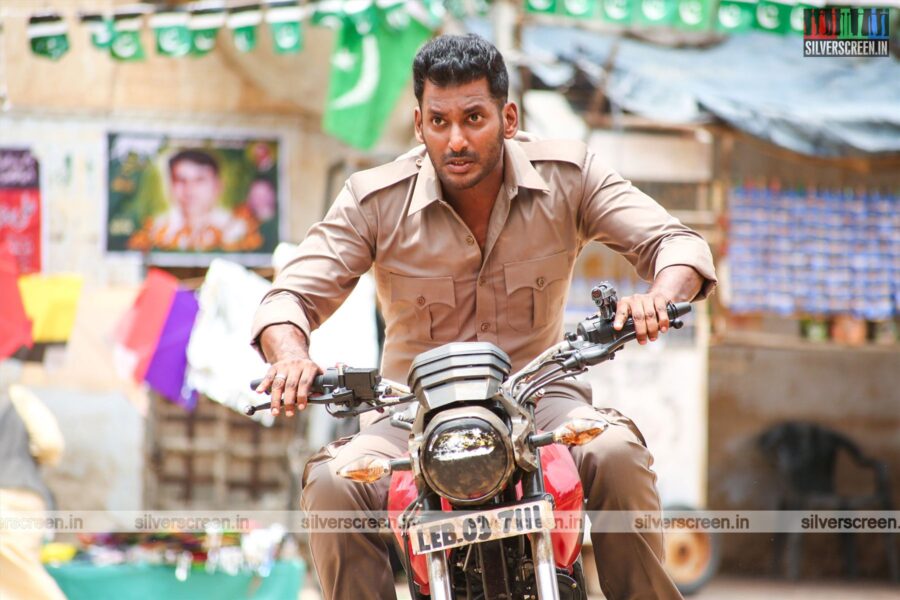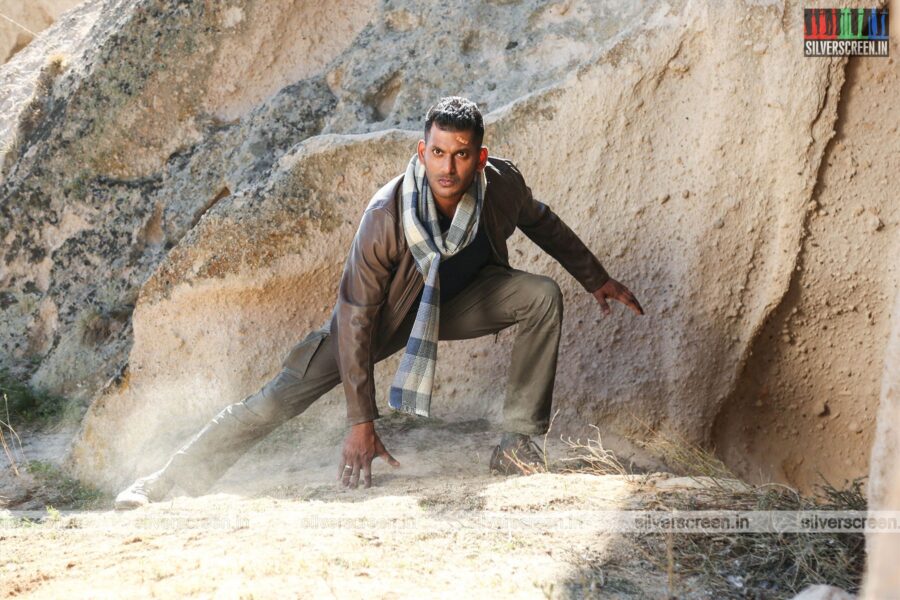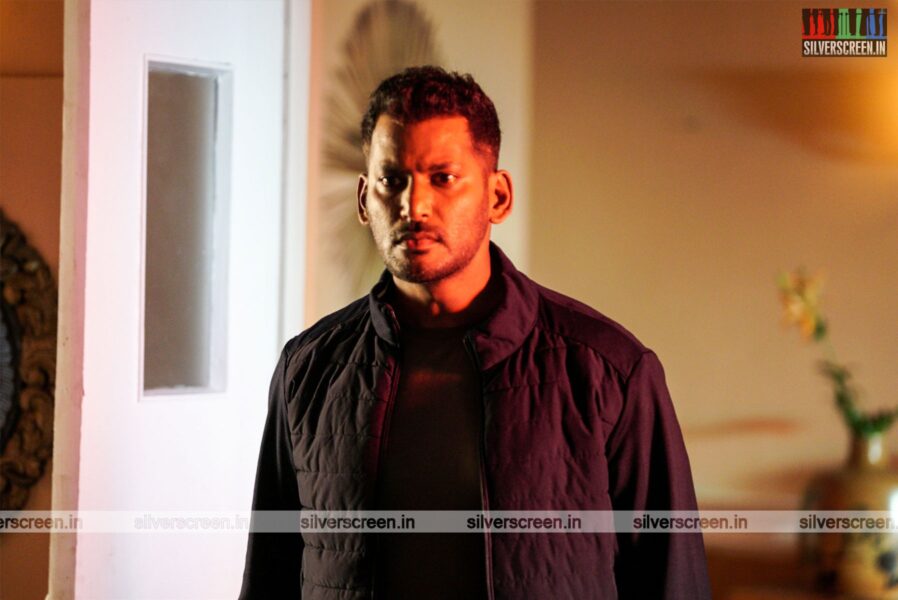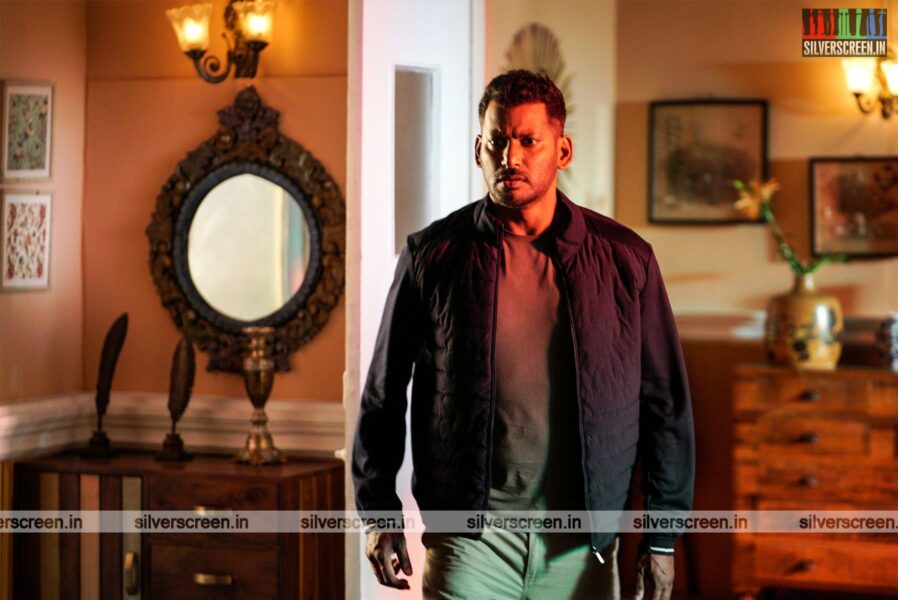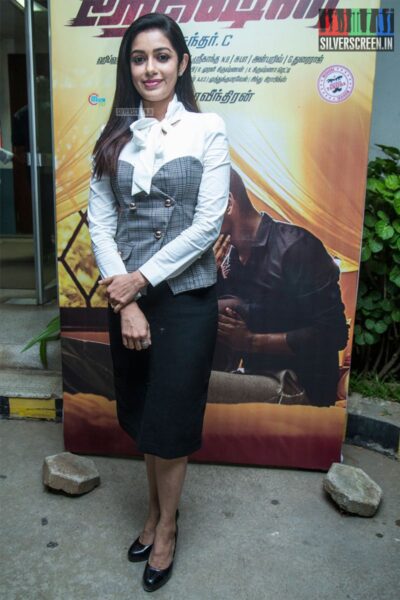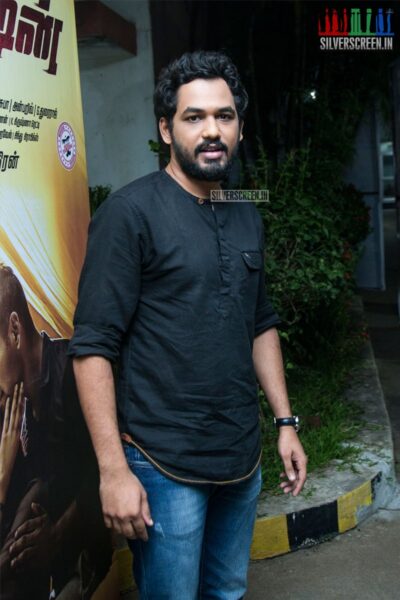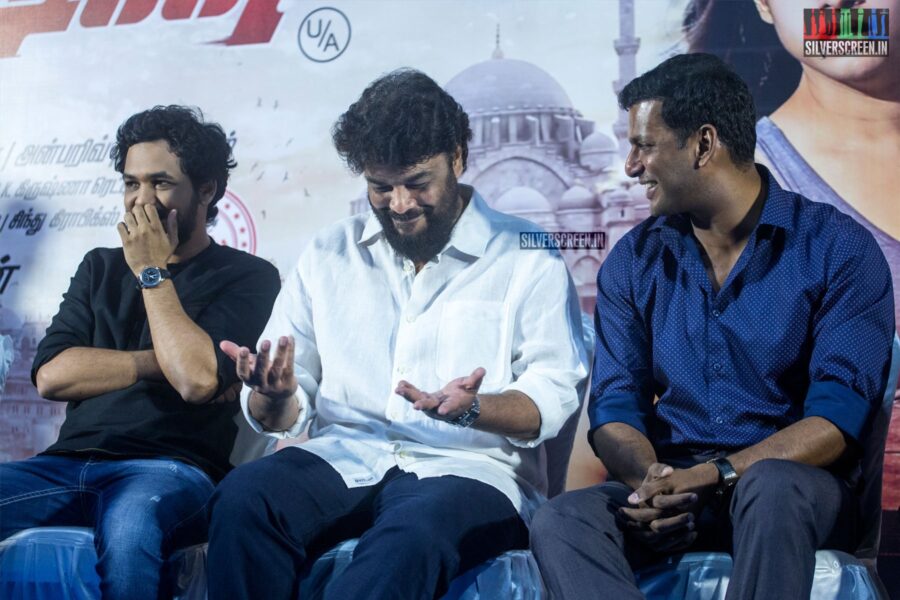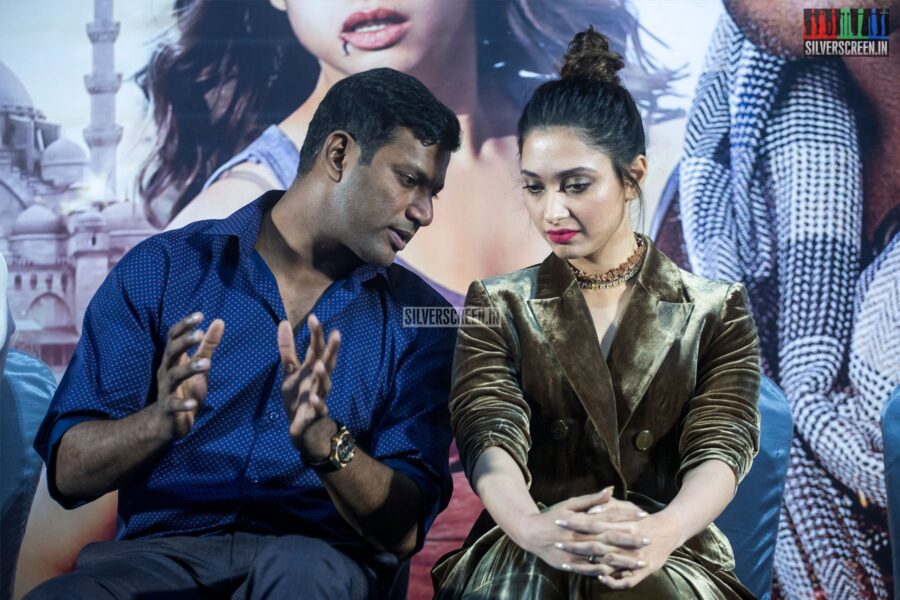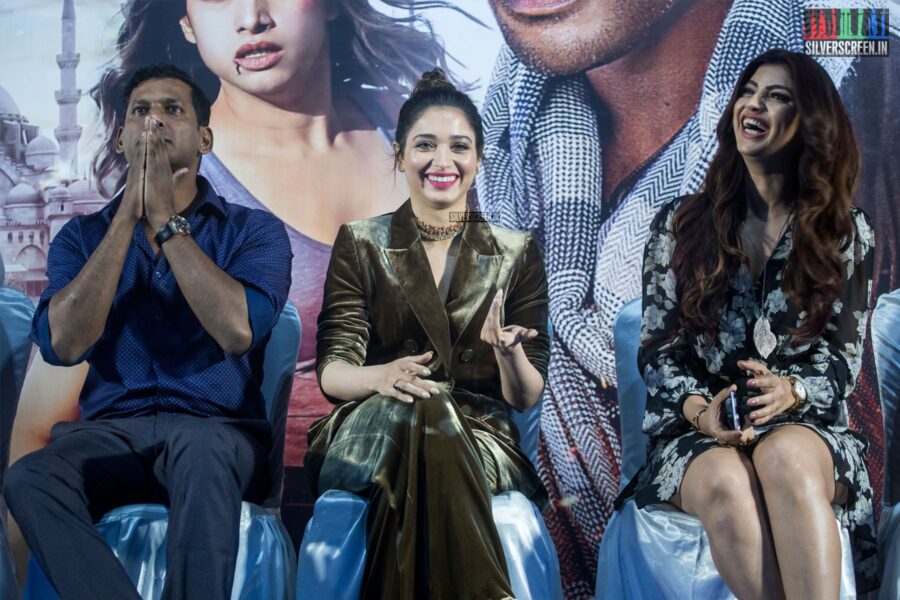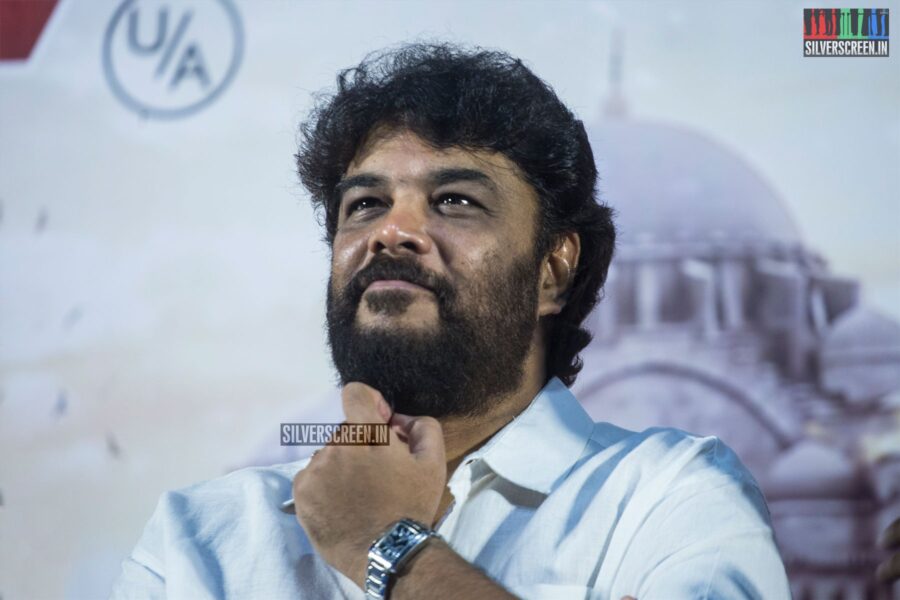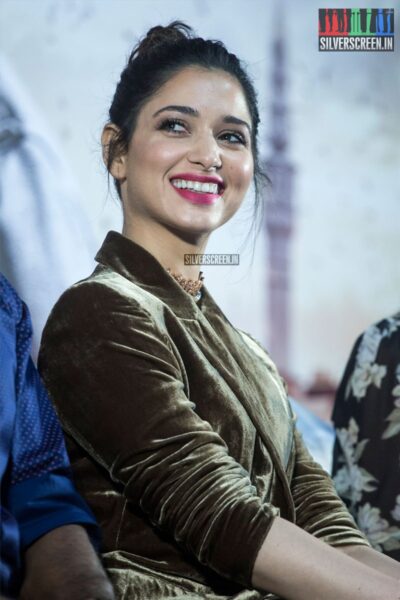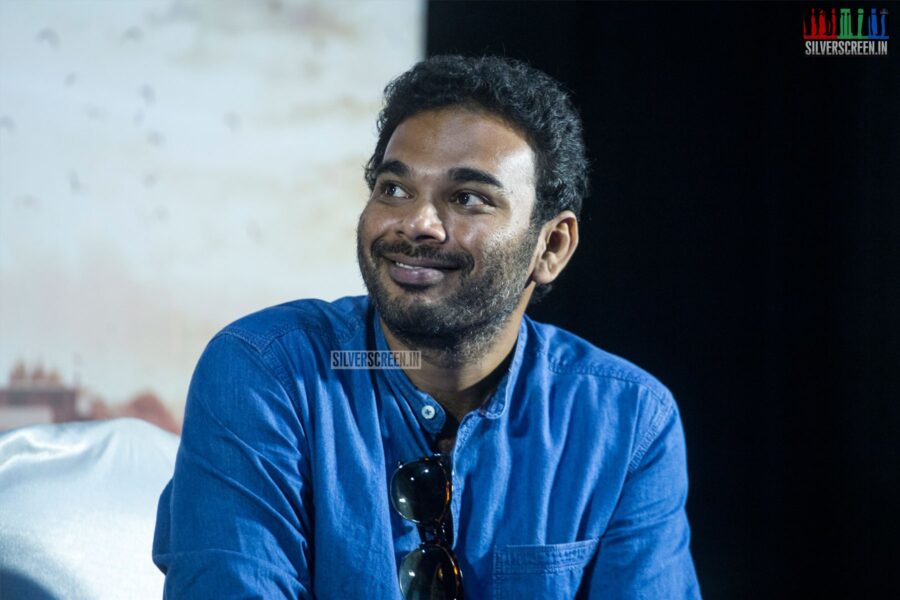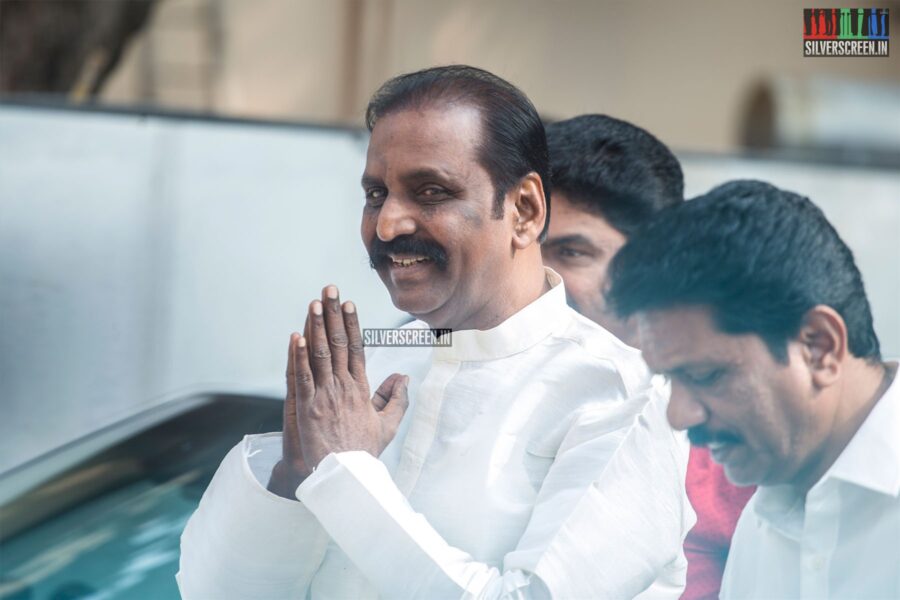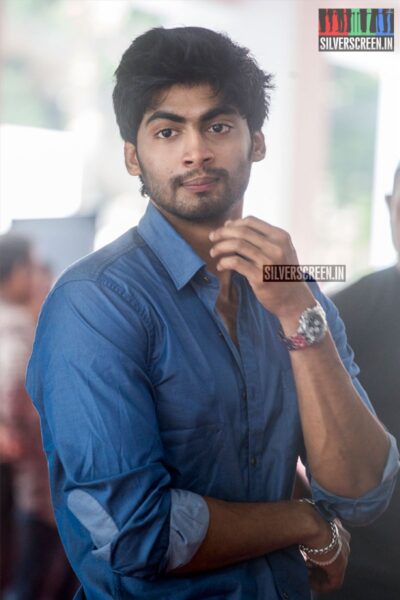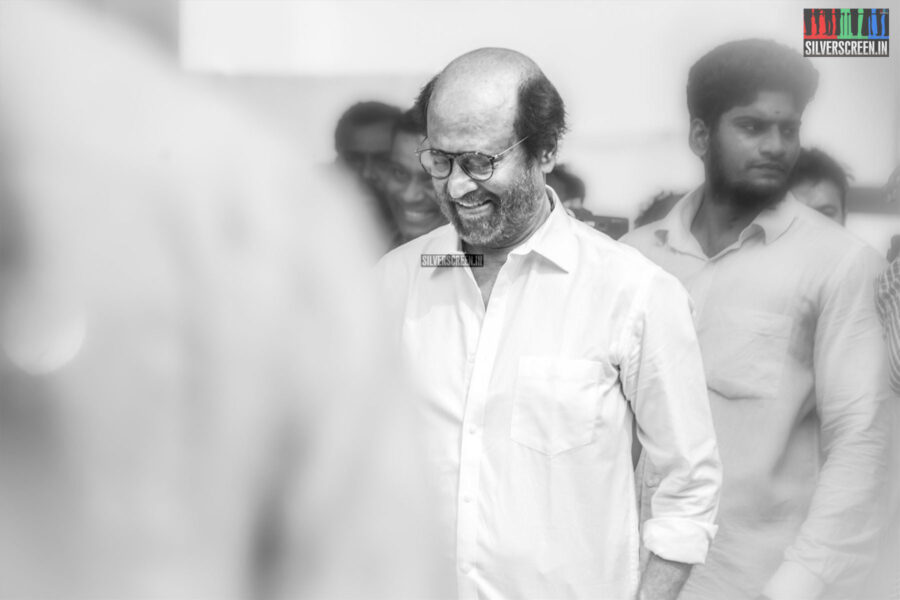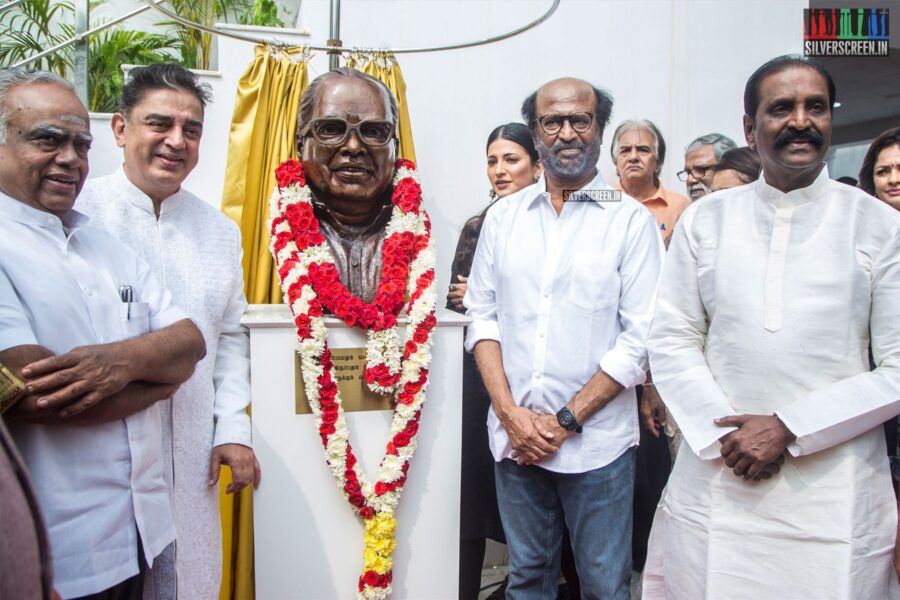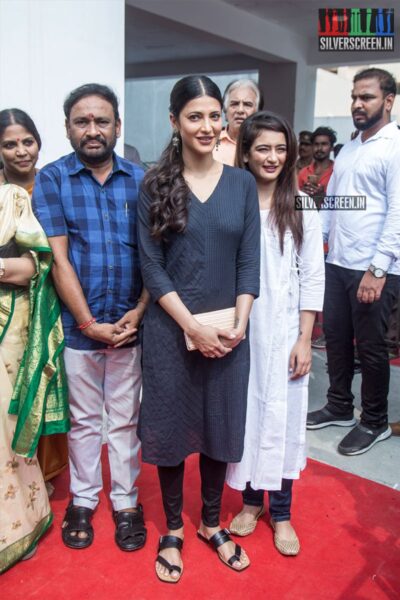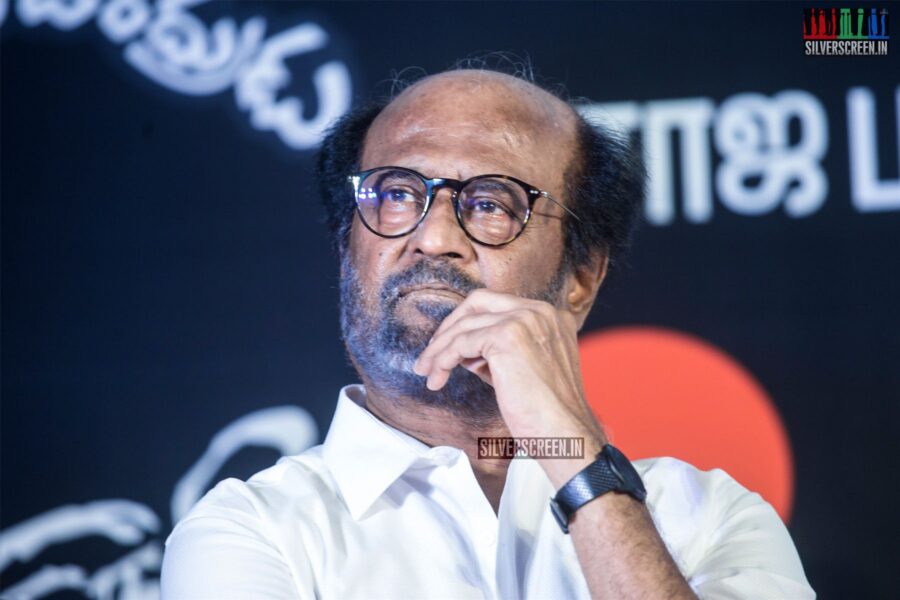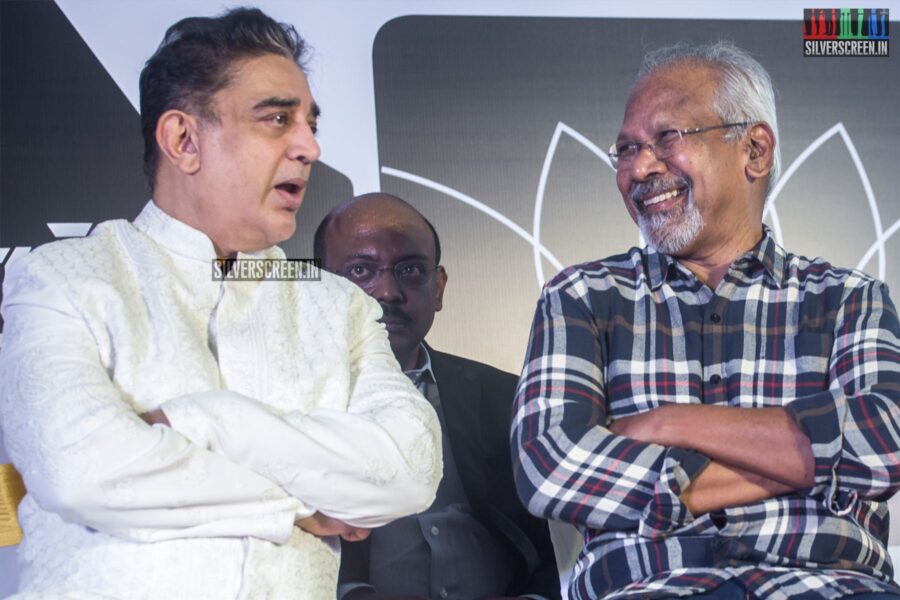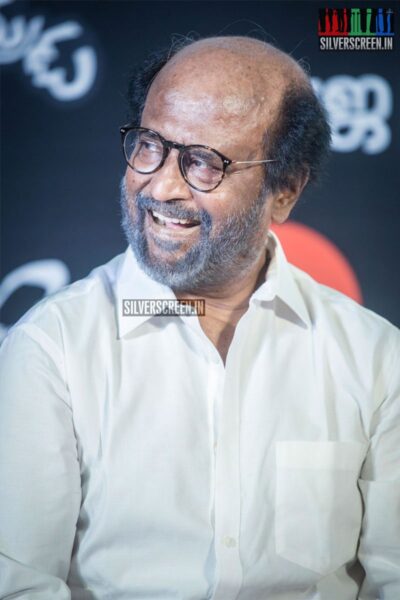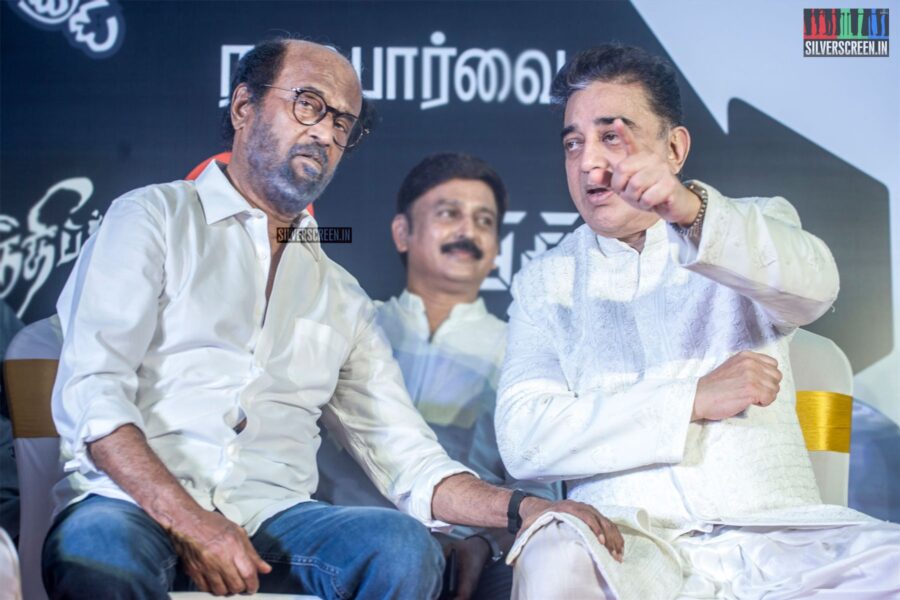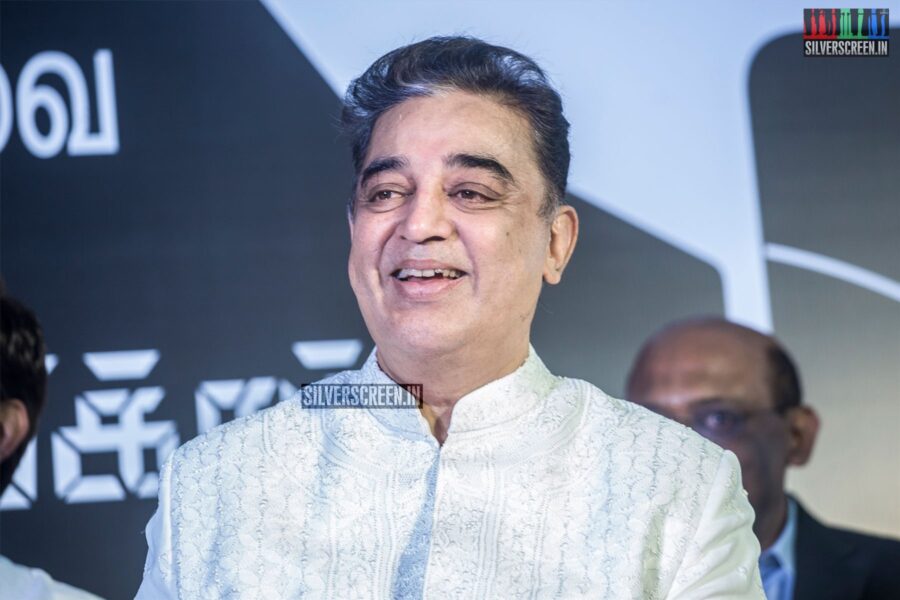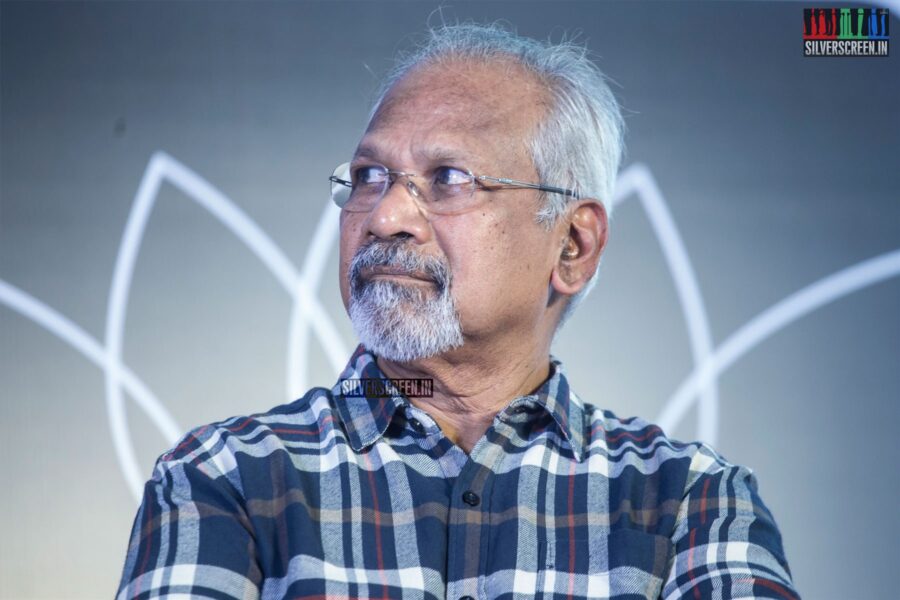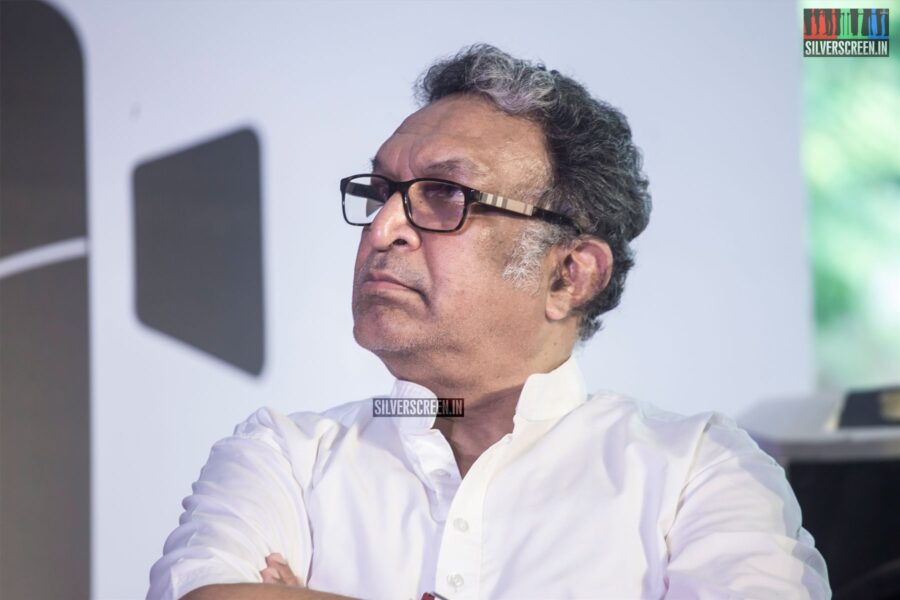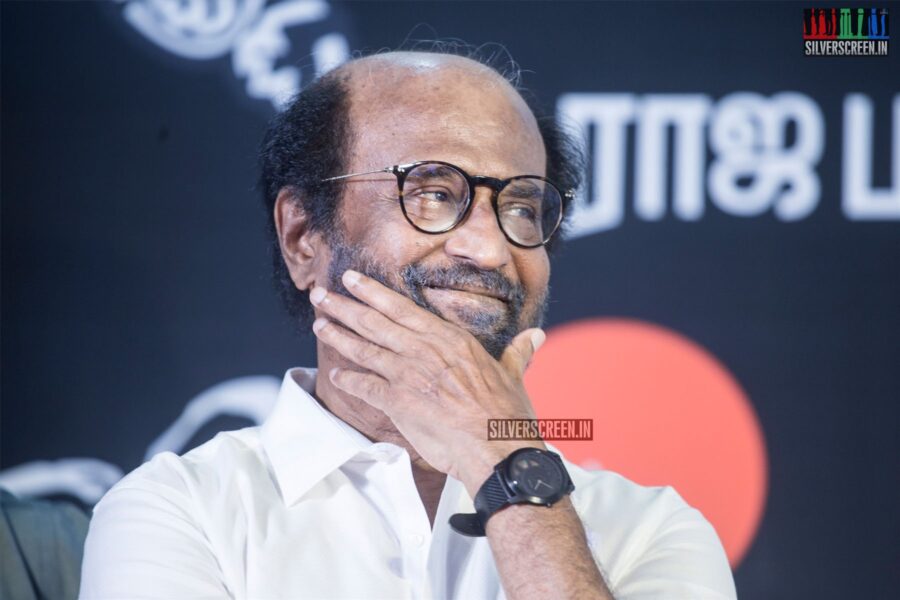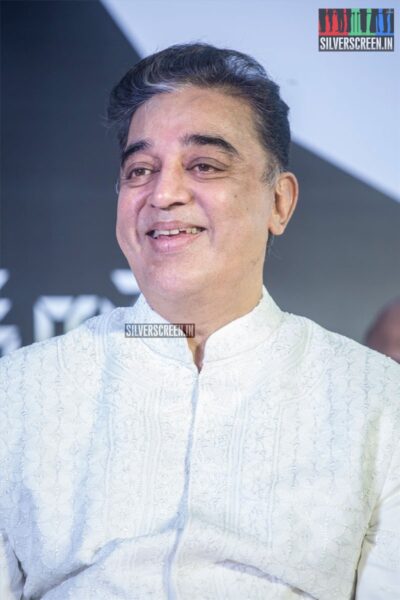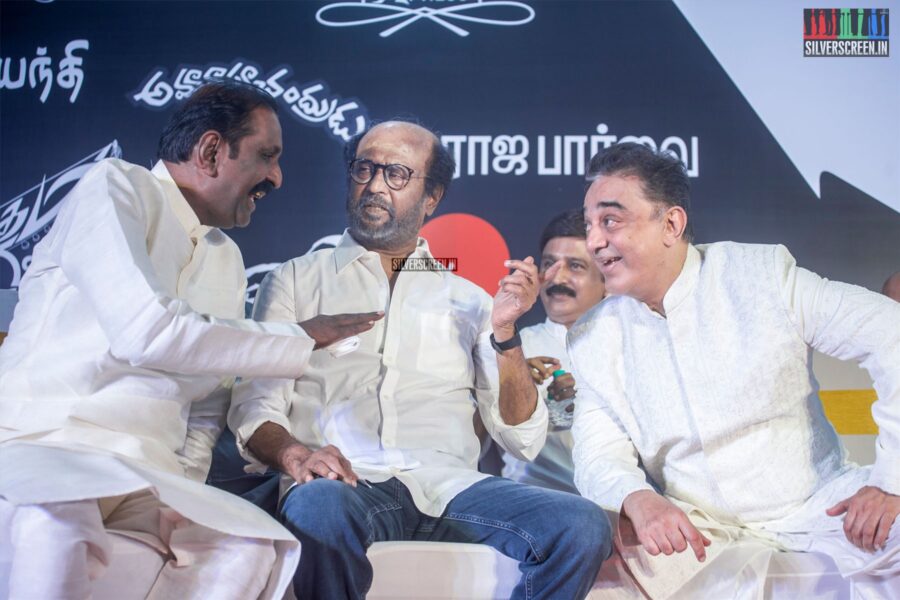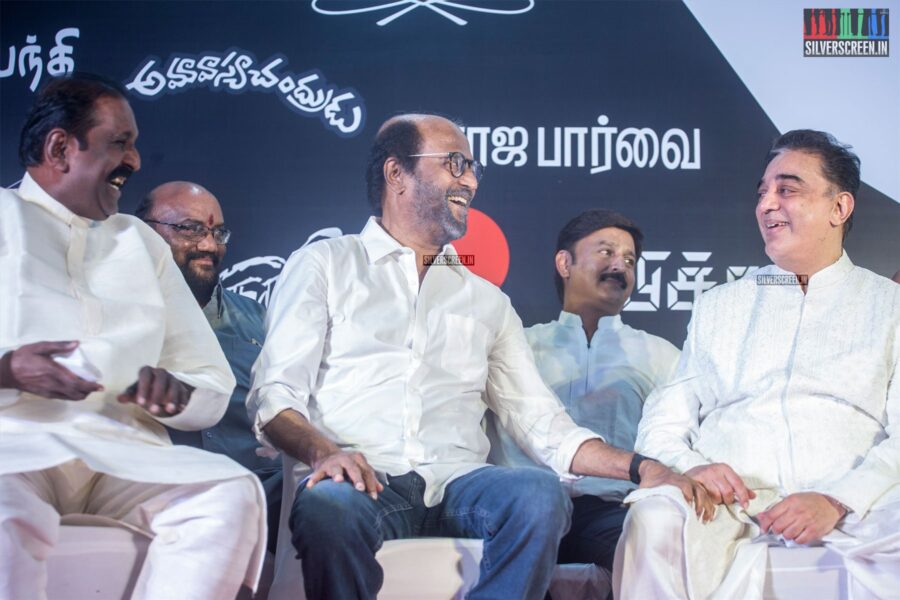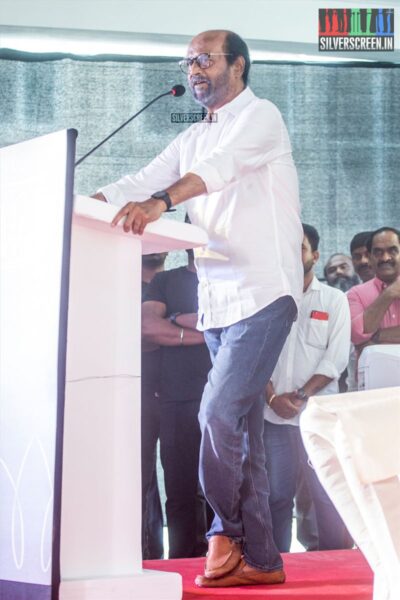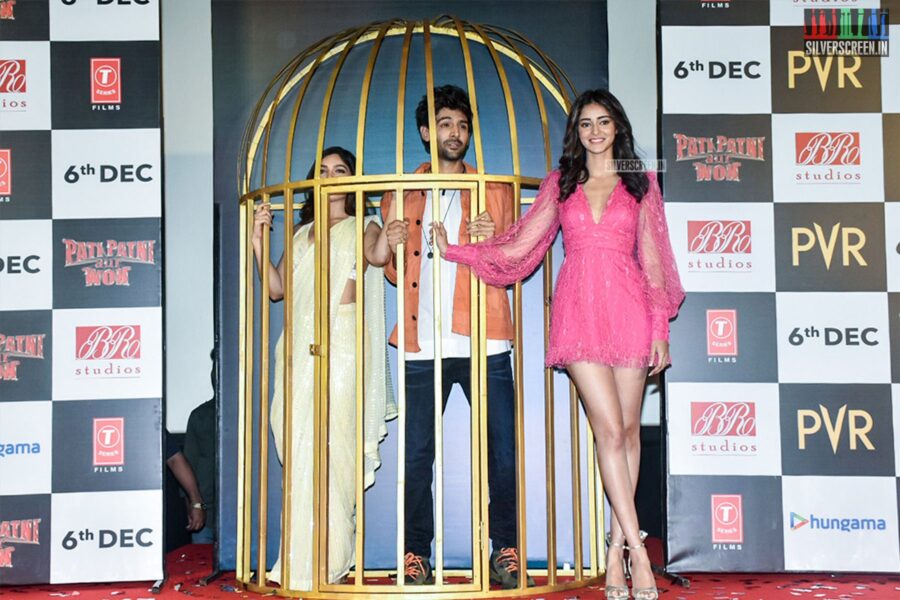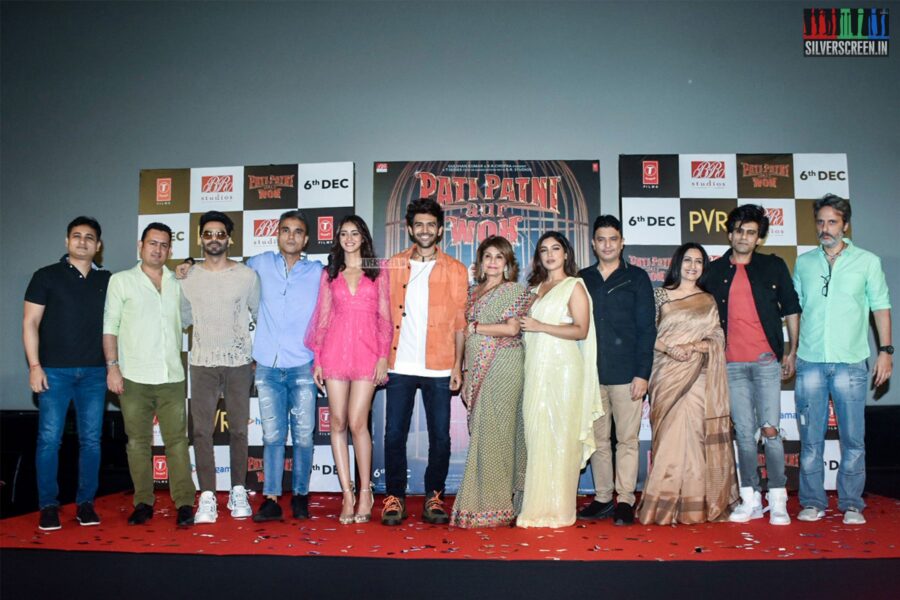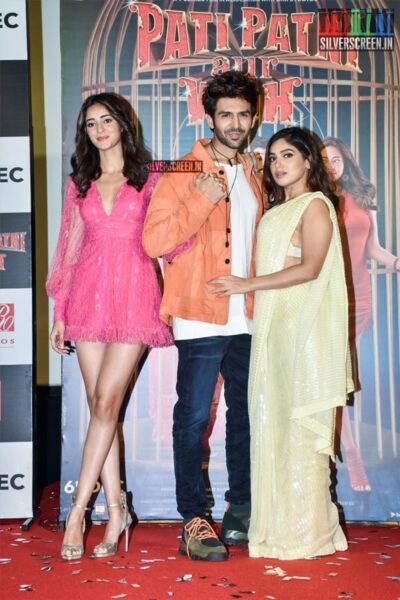Section: Movies
Mammootty’s ‘Mamangam’ Release Postponed To December 12
Mamangam, the big-budget period drama starring Mammootty, will now release on 12 December 2019. The film was initially scheduled to release in theatres in three south Indian languages – Malayalam, Telugu and Tamil – and Hindi on November 21. The film’s extensive VFX work has reportedly caused the delay.
Mamangam, directed by G Padmakumar and produced by Venu Kunnappilli, is set against the backdrop of the 17th century martial arts festival ‘Mamangam’, which used to be held once every 12 years at Thirunavaya on the banks of the Bharathapuzha river. Mammootty plays a Kalari warrior in the film which has a stellar cast that includes Unni Mukundan, Anu Sithara, Achuthan, Siddique, Manikkuttan, Manikandan Achary, Tarun Arora, Prachi Tehlan, Kaniha, and Iniya. Manoj Pillai is the cinematographer, Raja Mohammad is the editor, and M Jayachandran is the film’s music composer. Veteran Bollywood stunt choreographer Shaam Kaushal is also part of the crew.
In October, the film was in the news when Mammootty dubbed for the film’s Tamil version in ancient Tamil, with the help of director Ram.
There are a number of high-profile Malayalam films that have also delayed their release. Trance, directed by Anwar Rasheed and starring Fahadh Faasil, was scheduled to arrive in theatres in December 2019. However, now it’s known that the film might release only in February 2020. Similarly, the release of Mohanlal’s Big Brother, directed by Siddique, has also been postponed to 2020.
Action Movie Stills Starring Vishal, Tamannaah
‘Miga Miga Avasaram’ Review: An Important Issue Gets Insincere Treatment
Cast: Sri Priyanka, Arish Kumar, ‘Vazhakku En’ Muthuraman, E Ramadas, Linga, Seeman, ‘Aandavan Kattalai’ Aravindhan.
Director: Suresh Kamatchi
Do you remember parents and elders asking you to control your bladder while in a swimming pool and use the restroom instead? Well, here’s a movie that sort of glorifies the opposite of what we learnt back then. I understand the heroine did not have a choice, but I’m sure the director at least did and could’ve opted for a better plot, with more depth and meaningful characters. I’m still unable to come to terms with the fact that they quoted Avvaiyaar’s ‘Nallor oruvar ularel avar poruttu ellorukkum peyum mazhai’ and ended the film.
A police team has been assigned the route leading to a famous temple, Ardhanareeswarar, to provide protection for a VIP who will be visiting it. Samanthi (Sri Priyanka) who is constantly targeted by the Inspector (‘Vazhakku En’ Muthuraman) is made to stand alone on the bridge, with strict instructions to not move whatsoever.
The first half of the film defines no character clearly, so you rely upon the second half (which equally disappoints). We don’t know anything about the ‘VIP’ visiting the famous temple, praying at the temple or even leaving the temple. There seems to be something like a bomb planted at the temple under the water, which should’ve gone off at two-o-clock but that part of the story is completely ignored. The temple itself conveniently vanishes half-way through the movie and the entire focus is on Samanthi, and even the film fails to engage anyone.
The film doesn’t seem to follow any semblance of a timeline. Things just keep happening according to the characters’ whims and fancies. One of the good policemen (E Ramadas) promises to take Samanthi to the loo but doesn’t turn up till the end. He comfortably stays in his place assigned for bandobast without paying heed to what he said, clearly taking the girl and the audience for granted. So many unwanted scenes and excessive trickling down of water as a recurring motif which add no value to the narrative. Every time Samanthi is seen to be dealing with an issue on the bridge she’s been posted at, some random commuter has to stop by and ask her if she needs help. For which the actor responds in a fixed manner. No change in tone, action or expression.
Sri Priyanka’s performance was mediocre. Though she was the only reason that made the film slightly watchable, she was quite grating on occasion. There was no necessity for the repeated slow-motion shots of her drinking water from the ‘Sabols’ bottle. It made no difference other than dragging the film’s length. All the other characters were pointless and have clearly been used only to kill time. ‘Vazhakku En’ Muthuraman and Seeman perform well even while occupying lesser screen space. The young girl who plays the niece of Sri Priyanka does a poor job. It was evident that she was being directed while the camera was rolling.
Neither the camera work nor the music helped the film in any way. Most of the footage used was stock footage and even the shots taken by the cinematographer were very badly lit. One could see the harsh light on the faces of the characters inside the police jeep at the beginning of the film. The editing and dialogue department needed to be pulled up, they stretch out a short film and pen weak dialogues for a film touted to be a ‘bold’ attempt.
The theatre I went to watch the film in, stopped and restarted it from the beginning because of a slight mishap while screening. While there are so many more women’s issues that the film could’ve covered, it reluctantly sticks on to one aspect and doesn’t do justice to that either. Women face discrimination, sexual harassment, lack of proper sanitation and benefits even in today’s society. It would’ve been great if the film had touched on these topics with equal importance without taking the route it did and without ending on a disgraceful note. If women empowerment was their idea, I don’t understand why the other female characters in the film were not used to help the female-centric story along. With several obvious loopholes comes a film that is nothing near inspiring and does not celebrate women police in any way.
The Miga Miga Avasaram review is a Silverscreen.in original article. It was not paid for or commissioned by anyone associated with the film. Silverscreen.in and its writers do not have any commercial relationship with movies that are reviewed on the site.
Android Kunjappan Version 5.25 Review: Suraj Venjarammood Is Terrific In This Excellent Off-Kilter Comedy
Director: Ratheesh Balakrishnan
Cast: Suraj Venjarammood, Soubin Shahir, Saiju Kurup
Few films have tried to explore how our parents’ generation are coping in the digital age, of relationships kept alive by social media and Skype, where the line between real and synthetic is dangerously pale. In Android Kunjappan Ver 5.25, debut director and acclaimed production designer Ratheesh Balakrishnan creates a comically heightened imagination of a situation where a lonely and stubborn old man develops an intimate friendship with a robot in whom he starts seeing a reflection of his own son. Or rather, a better version of his son.
Bhaskaran (Suraj Venjarammood) isn’t an easy man to live with. The septuagenarian lives in a Payyanur village, in an old traditional mansion that stands as a metaphor for a past he has confined himself in. He is cantankerous and sharp-tongued. He doesn’t use modern household appliances, and believes in the old-school parenting method in which warmth and affection are never displayed. When his son Subramanian (Soubin Shahir), a mechanical engineer, takes up a high-paying job in Russia and insists on leaving, Bhaskaran creates a fuss, leading the young man to look for options beyond domestic helps and home nurses. Thus, Subramanian brings home a robot, manufactured by the Japanese company he works in, which can function like a human. The surprising element here is that the robot’s area of function isn’t just clinical. It has impressive cognitive skills, and an ability to touch its owner emotionally.
Ratheesh constructs a quirky milieu to house his off-kilter film. Everyone in the village possess an odd sense of humour – when they realise the robot is a harmless caregiver, their immediate is to smile heartily and ask for a selfie and the scene unfolds in an utmost organic fashion. In another instance, an elderly woman in the neighbourhood innocuously asks the robot for some astrological information. Never do you feel the robot is in the wrong place. The villagers operate in a space and time cut off from the rest of the world.
The high point of the film is the relationship arc of Bhaskaran and the robot who become the kind of allies, perhaps, its creators might not have envisaged. The old man finds in the machine precisely what he had been looking for – a devoted accomplice and a caregiver to attend to all his needs and tantrums. Ratheesh delineates the relationship smartly, with a lot of support from his editor Saiju Sreedharan who lends a disarmingly beautiful rhythm to the film’s narrative. The film’s astute design helps the audience feel at one with Bhaskaran and forget that the other entity is a robot built of metals, codes, and human will. More importantly, the film never explicitly shows that the robot is a creation of the market. Subramaniam first hears about it from his lover Hitomi (an excellent Kendy Zirdo), in a poignant tale about her father’s final days. The human details are accentuated.
Particularly interesting are the scenes that follow Subramaniam’s final homecoming. Bhaskaran is visibly unsettled, and he turns anxious, sneaking into rooms at night to be alone with the robot the way he used to. Interestingly, parallels could be drawn between Bhaskaran’s obsession with the robot to how the pre-millennial generation has, after many years of reprimanding their children for excessive use of mobile phones, turned into a set of people overtly attached to WhatsApp and Facebook. The robot opens to Bhaskaran a window he never knew existed, through which he starts looking at the world in a new light. He starts to smile at a neighbour he had always maintained a distance from. He also starts to mistrust the people he used to consider close.
Android Kunjappan Ver 5.25 also makes some interesting notes on the father-son relationship. The interactions between Subramanian and Bhaskaran often resembles scenes from a bad marriage. They are people as different as chalk and cheese – the son is mild-mannered, the father is cranky – but they make a family, and hence have to stick together. At the same time, you see that the love isn’t entirely lost too. There are heartwarming moments of them missing each other, quietly in loneliness.
At the heart of the film is Suraj Venjarammood’s performance as Bhaskaran. He brilliantly brings aboard a stubborn charm, and a subtle sense of helplessness. The actor, who is going through what is perhaps the best phase in his career, helps the viewers empathise with Bhaskaran, even when he is being unreasonable. Soubin Shahir, Saiju Kurup and actress Bhanumathi who plays a home nurse make an excellent supporting cast with great comic timing and a prowess to underplay.
Android Kunjappan Ver 5.25 gropes in the dark in the final sequences, struggling to find the perfect way to bring everything to a close. None of the devices it puts to use in this part of the narrative, like the sudden (and predictable) transformation of the machine into an antagonist, are effective. Yet, the film is quite unforgettable for its many charming and meaningful little moments about human connection.
The Android Kunjappan Ver 5.25 review is a Silverscreen.in original article. It was not paid for or commissioned by anyone associated with the film. Silverscreen.in and its writers do not have any commercial relationship with movies that are reviewed on the site.
***
Nithin Anil’s ‘A Thing Of Magic’: How A Filmmaker Inspired By Rima Das Went To Arale And Made A Marathi Film Without Knowing The Language
Last February, Nithin Anil, a 23-year-old media graduate from Kochi, and his friends travelled to Arale in Maharashtra to shoot a feature film in Marathi, a language none of them speaks or understands. All the characters were played by local villagers. A Thing of Magic, a delightful slice-of-life drama centred on two spunky little sisters who come across a pair of 3D glasses that piques their interest, was selected to the India Story category (non-competition) of the 21st MAMI Mumbai Film Festival that concluded on October 24. The film is less plot-oriented and more observational; alive with simple day-to-day moments from the villagers’ life. Post the film festival, the youngsters boarded a bus to Arale, to screen the film for the people who made it possible.
***
Arale lies 360 kilometres south of Mumbai. A little over 480 families live in the village skirted by a river and vast fields of sugarcane. Most days, it is a quiet and uneventful place where life runs in a predictable cycle. However, in the last week of October, the stillness in Arale was briefly disrupted by the homecoming of A Thing Of Magic.
“It was like a fan show of a superstar film!” says Nithin Anil, the first-time director of the film, who is now back to his hometown Kochi.
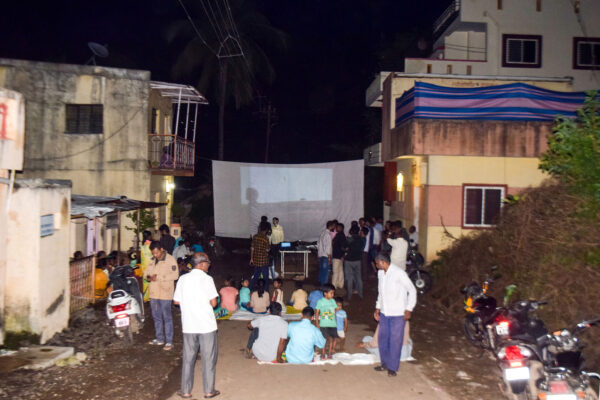
screening-2
“We reached the village with a projector and a Bluetooth speaker, but we were not sure where to screen the film. The villagers didn’t seem to be worried about it, though. They immediately got down to work. A rope was tied from one roof to another. A big white sheet of cloth was hung from it. The street was immediately cleared, and the traffic blocked. One of them arranged for the street lights in the vicinity to be switched off. By 7 pm, we were ready to screen the film!”
Post sunset, people started to gather on the street with mats to sit on and snacks to munch. Some took a seat on neighbouring terraces. There was music and laughter, and an auspicious coconut breaking ceremony to ward off evil.
“Since every cast member was from the village, each of them got a roaring applause, especially Harshad Baliram who played Gundu Kakka, one of the lead characters,” says Nithin. “Some of the actors had attended the screening at Mumbai Film Festival. They couldn’t quite tell if the audience had liked the film or not, thanks to the disciplined way the film festival crowd in Mumbai conducts itself inside a screening hall. Here in the village, everyone hooted, laughed and clapped throughout the film. It was a happy event.”
Nithin was 22 when he set out to make a feature film with a team of four friends he met on a film set where he worked briefly as a cinematographer’s assistant. He was greatly influenced by Rima Das’ Village Rockstars – thematically as well as by Das’ rebellious style of filmmaking. Another filmmaker whose name appears in the credit is Dileesh Pothan. “As a self-taught director, I learned a great deal about handling actors from Pothan’s interviews. He is practical, and not superficially “deep”. He says that in order to communicate the scenes to the actors, the director first has to internalise the scene.”
The story he had in mind required a rustic non-Kerala setting. “Initially we thought of shooting the film in Karnataka. My uncle, who was familiar with rural Maharashtra, suggested that we consider Arale.” Before landing in Arale, Nithin and his friends spent over a month travelling through interior Maharashtra. “Some of the villages were not electrified. Deprivation was starkly visible. We didn’t want to impose ourselves upon those villagers.”
Arale is a small village where everyone knows each other, well cut off from the city. “When we told someone in the village that we were looking to rent out a house during the shooting period, he immediately consulted his friends and took us to a family who rented out its vacant top-floor space to us for a sum as meagre as Rs 500 per month.”
The actors were selected in an audition. “When we said anyone in the village could attend the audition, we weren’t expecting a great response. But, to our surprise, the entire village turned up for the audition. And they were all good too!”
A nomadic singer who appeared in the village playing an Ektara on one of the days of the shoot, is featured in the film. “We were elated when we found him because, first of all, he was a great singer, and secondly, we didn’t have the budget to record an original song in a studio.”
Nithin doesn’t speak Marathi, although, he says, he has now started to understand the language a little. “Vaibhavi, the child who plays the elder sister in the film, had struck a pact with me before shooting began. She would only speak to me in Marathi, and I would respond only in English. That way, both of us would pick up bits and pieces of the two languages.”
While Nithin was always aware of the language barrier, he believed he would be able to scrape through with the help of Hindi. “I was naive enough to believe that everyone north of Western Ghats spoke Hindi. In Arale, most people don’t speak Hindi. It is not their language.”
Nithin and his translator, Aninditha Pradeep, devised a plan to tackle the communication problem. The actors weren’t given dialogues, but just the context, and were asked to improvise. “For a scene where two mothers crib about their children’s lack of respect for them, I explained the situation. The actors created their dialogues, my translator recorded it and played it back to me. It was a long and tedious process that required a lot of patience and energy. This is why I am grateful to the people of Arale. If not for their cooperation, this film wouldn’t have happened.”
Nithin wrote the screenplay during his stay in Arale. “Before finalising the shooting location, I had written a pointer for the story and a few scenes. I fleshed out the screenplay with the details I picked up from Arale. It was important,” he says.
Nithin’s approach, interestingly, blurs the line between characters and actors. Sometimes, the film just watches the villagers go about their chores. “While living there, one of the everyday sights I came across was of women cracking groundnut shells and passing the kernel to the people sitting around. There was something so meditative about that image. I knew I had to include it in the film.”
The 3D glasses at the centre of the film’s story is a subtle tribute to Abbas Kiarostami’s Koker Trilogy, says Nithin. “Those films have had a huge influence on me. Kiarostami brings in so much detailing using a meta-narrative. We grow closer to the people in Koker through each film..”
There is no cinema hall in Arale. “Many houses continue to use a black-and-white television. The villagers have mobile phones on which they play PUBG and watch soap operas, but none of the people I met in the village had any serious interest in movies and pop culture,” says Nithin.
Perhaps, it’s this lack of fascination about pop-culture that makes them effortless actors in front of the camera. “The actors were not intimidated by the camera or the crowd watching them. They were just thrilled to be part of the creative activity.”
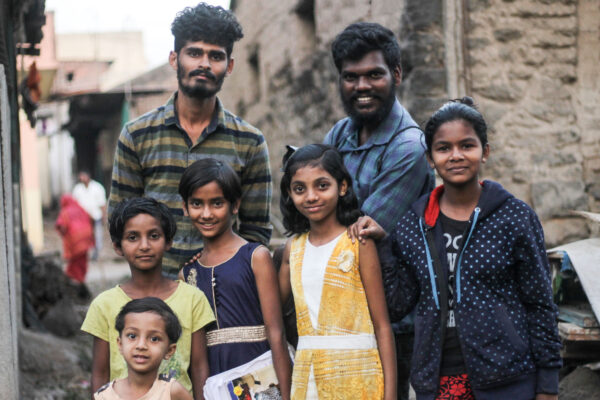
IMG_0887-(1)
Making a low-budget movie
Nithin used to attend Q&A sessions of film festivals to know how indie filmmakers managed their budget. “No one really revealed a figure. They would say their budget was ‘low’, but I wanted to know how low it could really go. I had no money at all. When I met some directors in Kerala, they said you could never go below Rs 10 Lakh. That really dissuaded me. That’s when I decided not to talk to filmmakers,” he says.
Nithin and his team made A Thing Of Magic at a shoestring budget of Rs 60,000. The film was shot by Priyadarshan ND, on a Panasonic Gh5 camera. The team didn’t have a shoulder rig, so they made one out of PVC pipes. “The flip-side of working on such a shoestring budget is that I had to schedule the post-production according to many people’s availability. Everything took a lot of time. The sound, for one, was completed in two months.”
Until the screening at Mumbai Film Festival, none of the crew members, including the director, knew how the film was going to look on the big screen. “That’s why our MAMI experience was so special. We were apprehensive how the visuals, shot with our minimal equipment, would turn out on the big screen. But, surprisingly, everything looked fine.”
Nithin now wants to compile his experience of navigating the tedious stages of indie filmmaking into a booklet. “You can save a lot of money if you know certain basic things. For instance, no one I consulted with about indie filmmaking told me that making a DCP (Digital Cinema Package) was expensive. I barely knew what a DCP was. Many new filmmakers enter the field without such fundamental information. These are things that we take for granted. I was lucky enough to find a man in Kolkata who agreed to do the DCP work for an incredibly nominal amount.”
Nithin is the son of Zeenath, a veteran theatre-film actress and a State award-winning voice artiste. Her response to her son’s decision to take the plunge into filmmaking was, unsurprisingly, unfavourable. “She was shocked. At that time, I had just Rs 30,000 in my account. She said it was impossible for someone like me to make a feature film, and asked me to buy a laptop using that money. I was a freelance writer at that time,” laughs Nithin.
Nithin is yet to buy that laptop.
***
Vishal, Tamannaah At The ‘Action’ Press Meet
Kaalidas Trailer Starring Bharath, Suresh Menon And Others
Kaalidas Cast & Crew:
Cast: Bharath, Suresh Menon, Aadhav Kannadasan, Ann Sheetal,
Director: Sri Senthil
Music: Vishal Chandrasekhar
Lyrics : Thamarai and Niranjan Bharathi
DOP : Suresh Bala
Editor : Bhuvan Srinivasan
PRO : Yuvaraj
Design : Thandora and Saba Designs
Stunt : Miracle Michael
Producer: Mani Dinakaran, MS Sivanesan and V Bhargavi
Banner: Leaping Horse Entertainment, Incredible Productions & DINA Studios
Executive Producer : Noveen Madhu
Label: TrendMusic
Adutha Saattai Trailer Starring Samuthirakani, Sasikumar, Yuvan, Athulya
Writer and Director: M. Anbazhagan
DOP: Rasamathi
Editor: Nirmal
Art: R. Vijaya Kumar
Stunt: Silva
Production executive. A. S. Sivachandran
Stills Manian
Costumes. Natraj
Makeup. Chandru
Pro: Nikhil
Designs: Saviyo
Silverscreen Editorial: The Curious Case Of Vairamuthu’s Continued Influence Over Kollywood
Elsewhere in India, women have been alarmed by the speed with which men accused just a year ago in the #Metoo movement are being rehabilitated. Here, in Tamil Nadu, there’s hardly room to wonder because one needs to atleast be slapped on the wrist before being rehabilitated.
Lyricist Vairamuthu, who was named by multiple women last year in the #Metoo movement never as much as left the scene, to require a rehabilitation.
This is a very curious case that begs our attention. What makes Vairamuthu so crucial to kollywood that the industry didn’t even make a show of coming together to address the concerns of victims? Instead, kollywood ‘punished’ singer and dubbing artiste Chinmayi, behaving like the katta panchayattu we see in the cinemas, banishing and ostracising her for speaking out against him in the #MeToo movement.
Yesterday, we were all witness to Kamal Haasan sharing the stage with Vairamuthu at an event that had nothing to do with the latter. It was an event to mark 60 years of Kamal Haasan’s career in the Tamil industry, and to unveil the statue of the man he considers his guru (and one who made many films centred on the state of women in the family and society) K Balachander.
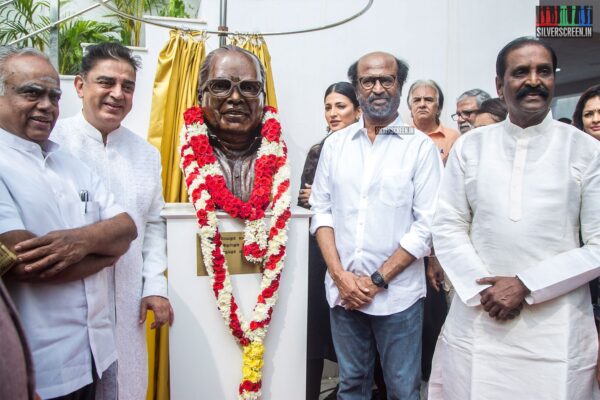
What message was Kamal Haasan, the actor who now also wants to be the Chief Minister of Tamil Nadu, sending to the women of his own industry and those of the state and the country by standing in solidarity with a man accused of being an aggressor?
It was a wrong precedent. And a concern that Kamal Haasan must address immediately. Especially if he wants to be seen as a credible politician and a voice of reason.
— From The Editor’s Desk
Bollywood Movie Review: ‘Bala’ Is A Hypocritical Film About An Egotistic Man And A Woman Wearing Dark Make Up Lecturing Us About Accepting Ourselves
Cast: Ayushmann Khurrana, Bhumi Pednekar, Yami Gautam
Director: Amar Kaushik
If you’ve been following Indian cinema, over the last few weeks, you’d think the biggest crisis Indian men are facing today is… male pattern baldness. If the 2017 film Ondu Motteya Kathe was a quiet gem coming from a space of self-introspection, Ujda Chaman that released a week ago was a wasted opportunity and a failure as a remake.
With Bala Ayushmann Khurrana, plays every role he’s already played. When even different becomes boring, you know you’re being typecast, without realising it. Ayushmaan is Bala and very arrogant as a kid, because he has SRK-like silken hair that he’s a little too proud of. He insults his bald teacher calling him ‘takle’ and insults his classmate Latika, for being too dark as well. The problem? Every single thing is painfully explained by a voiceover (the voice is that of ‘hair’).
Bala as an adult has his ‘comeuppance’. He is bald. For Bala, both the film and the character this baldness is all-consuming, it is the only preoccupation. He’s a 2-dimensional bore. His frustration, anger, and tantrums after the initial introduction are annoying. Begs the question, ‘So what?’ He subjects everyone around him to hell because he’s unable to come to terms with his appearance. The one line that stands out in the film comes from his father (Saurabh Shukla, who has fabulously come to terms with his baldness, both in real life and on-screen in this film). He asks, ‘You are not the only man to go bald.’
Bala is not even remotely funny to have a career as a stand-up comedian, he can mimic other actors, but he doesn’t even make a joke in their voice. He also spends his days insulting women for being dark-skinned as he peddles ‘Pretty You’, a fairness cream.
Bhumi Pednekar as Latika is an utter disgrace, dripping in black paint. I winced every time she came on screen. Indian filmmakers asking, if Ayushmann can act as a bald man why can’t Bhumi act as a dark woman? She can’t because, in this film, she isn’t even tan. She has been painted black. It is so bad that the shade keeps changing through the film and the make-up (0r paint) is so uneven that you can see the streaks of lighter shades under the black paint often. How difficult is it for Bollywood to cast an actual dark-skinned woman in this role? Would that not have been convincing, when Bhumi’s Latika lectures self-righteously on being okay with who you are? Instead, here, it just feels absolutely insincere, because guess what, Bhumi can wipe the makeup off and go back to being ‘fair’. The women buying fairness creams cannot. This is Bhumi’s strike two, in a sense, after playing an older woman in Saand ki Aankh. One is so distracted by the bad paint job on her body and face that there’s hardly any time left to notice her act or role. There were loud murmurs every time she came on screen in the hall I watched it in. I did not buy her role at all. It could have been a statement, instead Bollywood is only interested in tokenism of the worst kind.
Yami Gautam as the Tik Tok star Pari whom Bala falls in love with, and dupes with his toupe, is impressive and her role has the right shades of grey. She is self-aware, understands that looks are her currency in this world and shows considerable range as an actor. The other actors are in control of their craft, but their characters just do not have the kind of gravitas hers does. They are stuffy and this need to sermonise, turn every scenario, every insecurity of the hero, in every movie into a message for the society, instead of for him to instrospect, is making Bollywood more and more insufferable. Even the ‘jokes’ Bala makes after he has apparently come to terms with his baldness are neither insightful nor funny. They continue to milk laughs from looks. Just because he’s ok with laughing at himself, doesn’t mean he can laugh at others. The plot is contrived, and the supporting cast criminally under-used, their roles are written badly.
Bala coming in a long line of Khurrana films about the upper caste, North Indian, male anxiety about the ‘performance’ and ‘perception’ of virility, is about an annoyingly self-centred man who, even at the end of his ‘journey’ in this story remains woefully egotistic and works on the assumption that everyone around him exists to service him. What does that say about us now?
’41’ Review: Lal Jose Takes The Safest Route To Talk About Religion
Director: Lal Jose
Cast: Biju Menon, Nimisha Sajayan, Saranjith, Dhanya Ananya
One of the cornerstones of our mainstream cinema must be the caution the directors and writers take to not push the audience out of their comfort zone. For one, O Kadhal Kanmani (Mani Ratnam, 2015) begins as a rebellious modern love story that rejects the institution of marriage and traditional family. Rather soon, the young couple are caught in a whirl of doubts and emotional turmoil, and the film ends in a visual that resembles a high-end wedding video in vogue. Interestingly, the other couple in the film – the happily married traditionalists – never encounter the slightest hint of a doubt on if marriage is a necessary institution. The film doesn’t want to explore or discuss. It knows, and it preaches.
Director Lal Jose, like most of his contemporaries in the film industry, is very much a traditionalist. Nee-Na, his closest attempt at a non-conformist film, concludes on a note that agrees with the existing societal norms. An infidel married man is easily pardoned by his wife. The other woman writhes in pain and guilt, and goes on a self-imposed exile.
41, his latest film, isn’t different.
In a pre-release interview, Lal Jose had said that 41 dealt with a clash between theism and atheism. However, in the film, there is no conflict whatsoever. 41 clearly sides with the god-fearing majority. He repeats the popular and the safest point of view that God might exist. The believers in the film never undergo a bout with doubt, while the rationalist at the centre of the film is told repeatedly that his position might be wrong. And it is hard to decide what is more disappointing – his refusal to take a narrative risk or the overall coldness in the film’s tone.
The protagonist of the film, Ullas Kumar (Biju Menon), is a staunch communist who often borders on a caricature. The film emphasises too much on Ullas’ animosity with religion and tradition, as though it has just discovered the centrepiece of a communist’s existential conflict. His wedding is ruined when he shows up in a red t-shirt and kicks up a tussle with the bride’s (Nimisha Sajayan) relatives over a traditional lamp placed on the stage. He makes a fuss when his fellow party members decide to celebrate Onam.
This characterisation is akin to Cuba Mukundan of Lal Jose’s Arabikadha who tries to launch a labour union in the Dubai construction site where he goes to work. Both, Ullas and Mukundan, are kind and intelligent individuals who treat their ideology like an iron rod, refusing to bend it or see through it. They are an oddity in their surroundings. They are at once clowns, villains and heroes of their story. The unreasonableness in their nature is in stark contrast with the many interesting human details that turn them lifelike. It renders the characters, say, silly.
For a film that comes at a time when Sabarimala is at the centre of a burning controversy, 41 is an outright obsolete work. Ullas, at one point in the film, is forced to undertake a pilgrimage to Sabarimala with Vavachi Kannan (Saranjith), a fellow party member and an alcoholic devotee. If the Sabarimala case is essentially a feminist issue, in Lal Jose’s film women are old-fashioned enablers who take care of men like they are babies in diapers. One of the first scenes of Ullas has him relaxing on his armchair with a newspaper and crying out to his mother for a tea. Kannan comes home every night in an inebriated state, but wife Suma (Dhanya Ananya) coyly puts on her best clothes and a little make-up to welcome him.
The latter half of the film primarily focuses on the growing closeness between Ullas and Kannan. But this relationship arc doesn’t really come through because the frictions in their relationship weren’t strong on the first place. Never does Ullas come across as a villain in Kannan’s life.
During the pilgrimage that ends on a tragic note, the communist gets a first-hand experience of the sincerity and humaneness of the devotees. The visuals of the faith-induced mass hysteria at Sabarimala and other temples are repeatedly played to emphasise on the purity of believers’ emotions. In one of the scenes, a naxalite-turned-devotee explains to Ullas the culture of non-violence that Sabarimala pilgrimage propagates. To see the hollowness in this arguement, juxtapose these scenes to the final visuals in the film, of a brutal tragedy which is based on the real incident of Pullumedu Stampede of 2011 that killed over 100 pilgrims, and the press photos from the recent violent protests at Pampa led by right-wing groups.
The final part of the film works like a set-piece, not necessarily connected to the rest of the film. A massive stampede breaks out on top of a mountain, a part of a reserved forest. It is, ideally, an opportunity to raise questions about the human factors that caused it, or the impact it has on Ullas who witnesses the deaths from close quarters. But Lal Jose plays safe again. You see a shallow moment of human bonding and a shallower moment advertised as kindness. If the film’s climax, in spite of the weight of the tragedy, doesn’t register well, it is because Lal Jose fails to put it in perspective.
That said, 41 is one of Lal Jose’s better works in the recent years. It has many charming performances – Nimisha Sajayan, for one, does a fine job of making her presence felt without many dialogues. Biju Menon’s prowess to underplay comes handy here. He is relatable; someone you could easily sympathise with. The loudness in Saranjith’s mannerisms might take a while to register, but it is worth it. The actor makes impressive use of his body to portray the sensitive, alcoholic man. The film has interesting cinematography and production design. There are nice bits in the narrative that brings out the character of the Kannur village the film is set in. Many interactions between the sub-characters are organic and effortlessly witty. It is in such little parts Lal Jose retains his shine.
The 41 review is a Silverscreen original article. It was not paid for or commissioned by anyone associated with the movie. Silverscreen.in and its writers do not have an advertising relationship with movies that are reviewed on the site.
Rajinikanth and Kamal Haasan At #Kamal60
Ajay Devgn To Produce An Authorised Biopic Of Horror Genre Pioneers The Ramsay Brothers
Producer Priti Sinha has acquired the rights from the Ramsay family personally to make an authorised biopic on the Ramsay Brothers, in partnership with Ajay Devgn. The flagbearers of the horror genre in India, the Ramsay Brothers have an interesting life story on how they became such legendary names in the Hindi film industry and created a legacy that continues to be carried forward by younger generations, according to a press statement.
The film is titled The Ramsay Biopic and is being written by Ritesh Shah. While talking about the upcoming film to the press, producer Priti Sinha said, “The late Shri Tulsi Ramsay and Shyam Ramsay along with every member of the Ramsay family has given their blessing to go ahead and make this movie. Ajay and I are honored and excited to depict the fascinating journey of passion, hardships and mercurial success of three generations of the Ramsay family that made an empire out of the horror genre in the country.”
The Ramsay Brotherts made classic films like Veerana, Purana Mandir, Purani Haveli amongst others and also revolutionised television with their episodic show the Zee Horror Show.
Investigative Thriller ‘Lock Up’ Starring Vaibhav And Venkat Prabhu Wraps Up Shoot
The Vaibhav- Venkat Prabhu starrer, Lock Up, that is produced by Nitin Sathya has wrapped up shooting. The film also marks the debut of director SG Charles, who was an associate of director Mohan Raja.
Lock Up, is Nithin Sathyaa’s second production under his banner Shvedh. The film has been made, reportedly, on a big budget. The first look poster was released a while ago.
The movie being touted as an investigative thriller stars Vaibhav and Vani Bhojan in lead roles. Filmmaker Venkat Prabhu has been roped in to play a key role in the film. Actors Eswari Rao and Poorna are also appearing in important roles in the movie.
Lock Up features music by Aroll Corelli and camera work by Sandy. The movie has been edited by Jerald Anandh, the art department is being helmed by Anandh Mani. The film is in post-production, and release dates will be announced soon.
Darbar Motion Poster Starring Actor Rajinikanth Out Now
The motion poster of actor Rajinikanth‘s next Darbar just dropped. Helmed by AR Murugadoss, Subaskaran’s Lyca Productions is bankrolling it. The film marks the first association of Murugadoss with the actor who will feature as a cop long after his 1992 action-drama Pandian. Actress Nayanthara has been roped in to play the female lead and will be paired opposite the actor for the third time after Chandramukhi and Kuselan.
The motion poster opens with shots of the actor’s shoe stomping on glass and in mid-air action. ‘Aaditya Arunasalam’, his name in the film, is revealed through a shot of his name badge followed by a pull-back shot of the star seated on a rolling chair with brown sunglasses and a jacket whilst armed with a sword. The teaser closes with the title backed by the sound of his footsteps. Anirudh’s background score in the teaser is powerful. The word ‘Thalaiva’, as the actor is fondly referred to, also features in the background score.
Actors, Kamal Haasan, Salman Khan, Mohanlal, and Mahesh Babu took to Twitter to release the Tamil, Hindi, Malayalam and Telugu versions respectively.
நண்பர் @rajinikanth அவர்களின் #DarbarMotionPoster https://t.co/bn4ks6E6wY #DARBAR @anirudhofficial @LycaProductions
— Kamal Haasan (@ikamalhaasan) November 7, 2019
Best wishes to not just a superstar.. The only superstar! Rajni garu in full motion #DarbarMotionPoster https://t.co/kE1jxtIRzQ 🔥 #DARBAR @rajinikanth #Nayanthara @SunielVShetty @i_nivethathomas @anirudhofficial @santoshsivan @sreekar_prasad @LycaProductions #DarbarThiruvizha
— Chulbul Pandey (@BeingSalmanKhan) November 7, 2019
#DarbarMotionPoster
https://t.co/quk9II7cG7
#DARBAR @rajinikanth @ARMurugadoss #Nayanthara @SunielVShetty @i_nivethathomas @anirudhofficial @santoshsivan @sreekar_prasad @LycaProductions #DarbarThiruvizha #DarbarPongal— Mohanlal (@Mohanlal) November 7, 2019
Extremely happy to present the Telugu motion poster of @rajinikanth sir’s #Darbar. Love & respect always! 🙏 Best wishes to @ARMurugadoss sir & the entire team👍👍 #DarbarMotionPoster https://t.co/PgL9D27nBp
— Mahesh Babu (@urstrulyMahesh) November 7, 2019
The film also features Dilip Tahil, Suniel Shetty, Nivetha Thomas, Yogi Babu, Thambi Ramaiah, Sriman, Jatin Sarna, and Nawab Shah in crucial roles. Santhosh Sivan is cranking the camera with Sreekar Prasad on the edit and Anirudh Ravichander scoring music. The composer had previously worked with actor Rajinikanth in Karthik Subbaraj‘s Petta.
Here are some posters from the film which recently dropped.
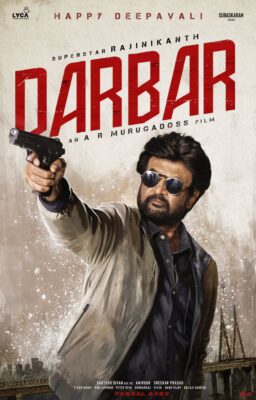
EHzTKZEU8AERdhX
The movie touted to be an action flick recently wrapped up shoot. It is slated for a Pongal 2020 release.
Watch the Tamil motion poster here.
Also read, Actor Rajinikanth To Be Felicitated With The ‘Icon of Golden Jubilee’ Award at IFFI 2019, Goa
Ten Songs From Kamal Haasan’s Early Years And Why We Are Listening To Them On His Birthday
Kamal Haasan as an artiste can give almost anyone aspiring to become one, serious complex. For he has been one for 60 years of his life (he’s 64 today). The most admirable thing about Kamal, though, is not that he can dabble in so many things with more success than most people can in a lifetime — write, sing, dance, perform, direct, act, choreograph, do makeup — it is the consistency with which he’s done it all. How he has shown up (and showing up they say is the most important and difficult part of being an artiste) for 60 years. That’s a lifetime of showing up. No wonder then that he has such a wonderful showreel that encompasses as much of who he is as what his art is.
What better way to watch this showreel unfold than in true Indian cinema and in a sense, Kamal style, with songs? Here’s a list of songs from an esteemed career that we think captures something unique about Kamal Haasan, the artist, in his early years, on his way to becoming the biggest icon of Indian cinema.
Ammavum Neeye, Appavum Neeye
In his very first screen avatar, here he is as Selvam. Showing considerable restraint and command over his act, even as a child artiste. Notice how with each stanza his expressions change.
Kadavul Amaithu Vaitha Medai
Kamal plays the endearing fool in love, the tramp, in this song, and some of his Chaplin-inspired moments continued for long after Aval Oru Thodarkathai.
Aatu Kutti
There was something larger-than-life about this song in 16 Vayathinile. Kamal was already on his way to being a powerhouse, known for the humongous body of work he was a part of by the time this film released in 1977. But what’s remarkable is how he stands as the antithesis of the toxic masculine energy you were expected to root for in cinema just then.
Bhale Bhale Mogadivoy
Can’t help but smile and maybe even maybe swing and sway… From the iconic Maro Charitra, this song is the coming together of the best of 70s — MS Viswanathan, LR Easwari, SP Balasubramaniam, Kamal Haasan, Sarita and of course, K Balchander.
Ore Naal Unai Naan
It was said that the All India Radio’s Tamil stations did not shut shop for the day without at least once playing this Yesudas-Vani Jayaram song, featuring Kamal and Sripriya from Ilamai Oonjaladugirathy. We also like how it transitions from the radio to the screen, his kitschy red outfit and the genteel, oldworldly vibe…
Sagarame Santhamaka Nee
How can a list of Kamal’s early songs not feature this absolutely gorgeous melody from Madanolsavam? With music by Salil Choudhary, sung by K J Yesudas it features a simple video, showcasing how un-star like, regular Kamal could be, if needed to be.
Sippi Irukkuthu Muthum Irukkuthu
It is sheer magic when Kamal-Sridevi-SPB-Janaki-MSV-Balachander-Kannadasan collaborate. How can it not be, with each of them competing to show us just why the silverscreen is such a powerful, magical medium.
Anthi Mazhai
The beats of the mridangam and strains of violins, in this Ilairayaja composition from Singeetham Sreenivasa Rao’s Raja Paarvai, complement Kamal Haasan and Madhavi’s on-screen chemistry. The visuals combine the indie vibe and grace of an art film with the star power of Tamil cinema.
Tere Mere Beech Mein
In both, Indian cinema’s history and Kamal’s own journey this is an important film that bridged what we call North-South sensibilities. There’s been nothing like Ek Duuje Ke Liye since and the song continues to be present in our collective imagination, presenting an alternative that’s somewhat more palatable, to Kashmir Tu Mein Kanyakumari.
Aye Zindagi Gale Lagale
While Kanna Kalaimane from Moondram Pirai is very special, Suresh Wadkar’s Aye Zindagi Gale Lalgele is Ilaiyaraaja’s most magical composition from Sadma. The ‘dard’ (pain) in Wadkar’s voice captures the underlying pathos of the film. A strain of which is seen in Kamal Haasan’s eyes through the film.
How The Dhenuki Cinema Project Took Kamal Haasan-Amala Starrer ‘Pushpak’ To A Village Without A Movie Hall In Bihar
It all started in 2012 when Suraj Prasad and Anuj Malhotra, two youngsters working with various film clubs and festivals, founded one of their own: Lightcube. One of the primary aims of this film society is to take the projector and, in turn, good films beyond the confines of the metros and the mainstream to alternative spaces, including far-flung corners of the country, and screen them for the local audience.
“Films are for everyone, not just a privileged few,” say Anuj and Suraj, voicing the main thought that drives their project.
The activities of their film society had officially begun with the first Dhenuki Cinema Project, a series of film screenings organised over one night in Suraj’s village, Dhenuki. The idea for it was sparked during a conversation he had with Anuj. Suraj was telling him about the many villages without electricity and how he wished that a number of films they had had the good fortune of watching in the city could be shown there too. He kept citing his own village Dhenuki as one such underdeveloped place. It prompted Anuj to suggest they initiate the project there, to begin with.
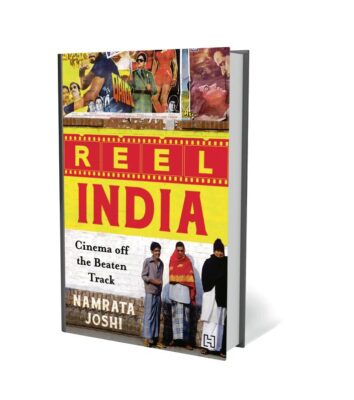
Reel_1567171156912
It proved to be the perfect launching ground for their endeavour. Dhenuki, near Chhapra, is a village still unexposed to the Internet. There is no cinema hall in or around it, the closest one being about 10 km away in Mashrakh. The women of Dhenuki had never seen a film. The exceptions, like a lady from Tinsukhia, in Assam, were those who had watched films in their parents’ homes before being married into families living in this village. They still missed those years when they enjoyed the cinema-viewing experience.
Suraj had to use the local resources at hand – bedsheets stitched together to serve as a movie screen, a locally sourced projector and a diesel genset to screen films for the residents of the village. And it would all take place in the courtyard of the mukhiya’s house, with the host himself watching a film on the big screen after a gap of 25 years. A 70-strong audience gathered to watch a film that marked Hrishikesh Mukherjee’s directorial debut in 1957: Musafir, remarkable in more ways than one, for not only had Dilip Kumar acted in it, but had even sung a song for it. Among the viewers was an 85-year-old man who had never seen a film in his entire life. A serious, sombre, tragic and rather slow film, Musafir didn’t go down too well with many in the audience. For a village that sleeps early, however, Dhenuki wanted more when the film got over at 11 p.m. Giving in to their demands, Suraj then screened Kamal Haasan’s Pushpak, a silent comedy that they were able to connect with instantly. The audience stayed on to watch it until the end and dispersed only at 1.30 a.m.
“Despite not being exposed to the nuances of cinema, they responded to the small moments,” Suraj remembers.
It was also a happy community experience, an occasion for the entire village to get together, enjoy the moving image and share an experience.
With successful pilot projects in Bihar, Chhattisgarh, Assam and Nagaland, The Dhenuki Cinema Project has now grown into a well-known, cinema-based outreach and education programme. As part of its affairs, the society enlists various volunteers and cine-activists to visit villages and smaller towns in different parts of the country to organise film screenings. The broader purpose of this mobile screening exercise is to create an opportunity for conversation in these villages, to enable residents to introspect on their individual roles in building the larger mythology of the region to which they belong.
Cine-activists travel to the village and stay there for three months, initiating the film club, which screens films at different locations within the village. They then hand over the equipment and the functioning of the film club to the local population, which attempts to make the club sustainable in the subsequent six-month period, before initiating the building of a multipurpose resource centre in the village, with its residents as participants and stakeholders.
Excerpted with permission from Reel India by Namrata Joshi, Hachette India.
Also read, The Sound Of Silence: Revisiting ‘Pushpak’ Thirty Years Later
Actress Sharada To Be The Chief Guest At The Opening Ceremony Of 24th International Film Festival Of Kerala
Actress Sharada will be the chief guest at the opening ceremony of 24th International Film festival Of Kerala (IFFK) which begins on December 6 at Thiruvananthapuram’s Nishagandhi auditorium. The 8-day event will be inaugurated by Chief Minister of the State, Pinarayi Vijayan.
Sharada, 74, was the first actress from the Malayalam film industry to have won a National Award for Best Actress. She has won the honour thrice — for Thulabharam (1968), Swayamvaram (1972) and Nimajjanam (1977). The thespian has also won the Kerala State Film Awards in 1970 for Thriveni and Thara. Besides Malayalam, she has also acted in Kannada, Telugu, Tamil, and Hindi films.
This year, IFFK will felicitate Argentine filmmaker Fernando Solanas whose five films will be screened at the festival. Solanas is known for his vast body of work that documents the collective political unrest in Latin America. At the end of the 1960s, Solanas, and his friend Octavio Getino founded the Grupo Cine Liberación, aimed at creating a collective creation process and resist political oppression, and developed the theory of Third Cinema as an alternative to American and European cinema.
This year, the film festival will screen over 180 films in fourteen venues across the city. There will be retrospectives of Sharada’s films, we well as of late filmmakers Mrinal Sen, Lenin Rajendran and Gireesh Karnad, and late cinematographer MJ Radhakrishnan. This year, the delegate fee has been fixed at Rs 1000, 50 per cent lesser than last year’s fee. The delegate registration begins on November 8. For those who register post-November 25, the fee will be Rs 1500.
Also read: Interview With IFFK Artistic Director Bina Paul: “We Have Always Been A Cinephiles’ Festival”
Meanwhile, a group of indie filmmakers have launched a social media campaign against the International Film Festival Of Kerala (IFFK), alleging that the festival’s film selection committee has been flouting rules and rejecting films without viewing them. On their Facebook page, Reform The IFFK, the filmmakers say that they are going to file a legal petition against the film festival to get the current selection lists of Indian and Malayalam films cancelled. They demand that the Academy reconstitute the panels and make fresh and fair selections. The filmmakers also allege that the Chalachitra Academy was favouring commercial films over independent arthouse films.
‘Nishabdham’ Teaser Starring Actors Anushka Shetty and R Madhavan Out Now
The teaser of Anushka Shetty – R Madhavan starrer Nishabdam / Silence is out now. The film helmed by Hemanth Madhukar is jointly bankrolled by Kona Film Corporation and People Media Factory. While Anushka plays ‘Sakshi’, a mute artist, Madhavan plays ‘Anthony’, a celebrity musician. The pair will be seen together for the second time after their 2006 Tamil action-comedy flick Rendu.
The teaser opens with Anushka and Madhavan supposedly going on a vacation, where they reside in a haunted wooden house. We then witness a suited Michael Madsen with black shades, a cop Anjali firing a gun, a worried Shalini Pandey and quick cuts of various instances right through the teaser. Backed by a thrilling background score, the racy teaser features no dialogue owing to its title ‘Silence’.
The teaser dropped in five languages — Tamil, Telugu, Malayalam, Hindi, and English. Director-producers, Puri Jagannadh, Gautham Menon and Neeraj Pandey, released the Telugu, Tamil and Malayalam, and Hindi versions respectively.
We are super excited for #NishabdhamTeaser #HBDanushka 😀#AnushkaShetty @ActorMadhavan @yoursanjali @shalinipandeyyy @actorsubbaraju @hemantmadhukar #TGVishwaprasad @konavenkat99 @vivekkuchibotla @peoplemediafcy @KonaFilmCorphttps://t.co/4o4BZ3yxD4 pic.twitter.com/bxRY4QEcYe
— PURIJAGAN (@purijagan) November 6, 2019
https://t.co/wgsZVsl1JM
Nishabdham
THE Anushka …
With Madhavan, Anjali and Shalini Pandey
A thriller with lots of silence, and a musical too.
Intriguing !— Gauthamvasudevmenon (@menongautham) November 6, 2019
https://t.co/O1vZrAjdUg#NishabdhamTeaser– Malayalam @ActorMadhavan #AnushkaShetty @yoursanjali @shalinipandeyyy @actorsubbaraju @hemantmadhukar #TGVishwaprasad
@konavenkat99
@vivekkuchibotla @peoplemediafcy @KonaFilmCorp— Gauthamvasudevmenon (@menongautham) November 6, 2019
Happy to release the teaser of NISHABDHAM.. my best wishes to the teamhttps://t.co/CLTxr4Iy1B
@ActorMadhavan #AnushkaShetty @yoursanjali @shalinipandeyyy @actorsubbaraju @hemantmadhukar #TGVishwaprasad @konavenkat99 @vivekkuchibotla @peoplemediafcy @KonaFilmCorp— Neeraj Pandey (@neerajpofficial) November 6, 2019
Nishabdam‘s cast includes Anjali, Shalini Pandey, Subbaraju, Srinivas Avasarala, and Kill Bill fame Michael Madsen. Gopi Sunder has composed music and Shaneil Deo has done the cinematography with Prawin Pudi on the edit. The film also comprises technicians from Hollywood and has been shot extensively in Seattle, USA.
The film is now in the post-production phase and will reportedly hit screens soon.
Recently, the first look posters of actors Madhavan and Anjali were released. Anjali plays ‘Maha’, a crime detective at the Seattle Police Department.
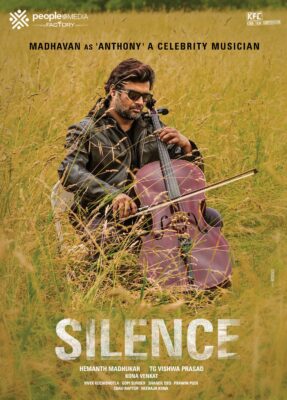
EGP87r-UYAAz2eE
Watch the Telugu teaser of the film here.
Nishabdham Teaser Starring R Madhavan, Anushka Shetty, Anjali, Shalini Pandey
Movie Details:
Movie Name: Nishabdham/Silence
Director:Hemant Madhukar
Production Company: People media factory in association with kona film corporation
Cast: Anushka Shetty, Madhavan, Anjali, Shalini Pandey,Michael Madsen,Subbaraju,Avasarala Srinivas
Music: Gopi Sundar
Cinematography: Shaneil Deo
Language: Telugu, Tamil, Malayalam, Hindi and English
‘Maavuliyo Maavuli’ Video Song From Director Athiyan Athirai’s ‘Gundu’ Out Now
A song from actors Attakathi Dinesh and Kayal Anandhi starrer Irandam Ulagaporin Kadaisi Gundu, a.k.a Gundu, ‘Maavuliyo Maavuli’ is out now. The film marks the cinematic debut of musician, Tenma who is the leader and musical director of the ‘Casteless Collective’ band. Helmed by debutant Athiyan Athirai, the film is bankrolled by director-producer Pa Ranjith‘s Neelam Productions which previously commissioned Maari Selvaraj’s critically acclaimed Pariyerum Perumal.
The song features montages of the lead pair sharing some beautiful moments near the hillside, temple, and town against a festival backdrop. The melody has been rendered by Shweta Mohan and Tenma, the composer.
Director-producer Karthik Subbaraj took to Twitter to release the song.
Happy to launch the #MaavuliyoMaavuli Video song
Best wishes to the team 👍
A @tenmamakesmusic musical🎷@Dineshvcravi @beemji@AthiraiAthiyan @kishorkumardop@anandhiactress @Riythvika@EditorSelva @anthoruban @officialneelam@pro_guna @thinkmusicindiahttps://t.co/SyJXBTo0cd— karthik subbaraj (@karthiksubbaraj) November 4, 2019
Apart from the lead pair, Gundu features Riythvika, Muneeskanth, Lijeesh, and John Vijay in important roles. Kishore Kumar is handling cinematography with Selva RK on the edit and T. Ramalingam helming art.
Speaking to Silverscreen, recently, Athiyan had said that when he was disillusioned with cinema he left tinsel town to go work in an iron scrap store. Dinesh’s character in this film too works in one. He also added that the film talks about the ill effects of bombs and the importance of love.
Gundu has been conferred with a ‘U’ certificate by the censor board. It is all set for a November release.
தணிக்கைகுழுவின் பாராட்டுதலோடு #குண்டு படத்திற்கு ” U ” சான்றிதழ்.
மகிழ்ச்சி..!@AthiraiAthiyan @Dineshvcravi @anandhiactress @kishorkumardop @Riythvika @tenmamakesmusic @thinkmusicindia @officialneelam @pro_guna @LijeeshActor @thilak_ramesh @Poet_Umadevi_3 pic.twitter.com/aeTzCqFU6a
— pa.ranjith (@beemji) November 6, 2019
Watch ‘Maavuliyo Maavuli’ here.
Also read, Trailer of Irandam Ulagaporin Kadaisi Gundu Out Now; Here’s The Lowdown
Ananya Panday, Bhumi Pednekar Promote ‘Pati Patni Aur Woh’
Kriti Kharbanda, Ileana D’Cruz, Urvashi Rautela Promote ‘Pagalpanti’
‘ChiyaanVikram58’ Wraps Up Its First Schedule
ChiyaanVikram58, directed by Ajay Gnanamuthu, has wrapped up its first schedule. The movie began shoot in October. Slated as an action film it is being produced by Lalith Kumar’s Seven Screen Studio and stars actors Vikram and debutant Srinidhi Shetty of KGF fame.
Cricketer Irfan Pathan who plays a crucial role in the film, took to Twitter to announce the news.
Greetings (Vanakkam) All.. Thanks to all Tamilians for helping my first step in acting.. First schedule completed successfully.. I’m waiting to see everyone again.. @AjayGnanamuthu @mejella2595
— Irfan Pathan (@IrfanPathan) November 5, 2019
Director Ajay Gnanamuthu also replied to Irfan’s tweet.
Already missing you sir @IrfanPathan 😊😊🙌🏻🙌🏻 #ChiyaanVikram58 https://t.co/VMwXGjqiWN
— Ajay Gnanamuthu (@AjayGnanamuthu) November 5, 2019
The film is being scored by Oscar winner AR Rahman with Sivakumar Vijayan doing the cinematography and Amaran as the art director. The film reportedly features Super Singer fame Poovaiyar and Comali director Pradeep Ranganathan in crucial roles and will be shot at multiple locations across India and abroad.
The film is slated for an April 2020 release.
Meanwhile, actor Vikram who was last seen in Rajesh M Selva‘s Kadaram Kondaan will next be seen in Gautham Menon‘s Dhruva Natchathiram as ‘John’ which is currently in the post-production stage. The actor is also busy with the release of his son, Dhruv Vikram’s debut film Adithya Varma. The film, helmed by Gireesaaya, is the official Tamil remake of Sandeep Reddy Vanga‘s Arjun Reddy that starred Vijay Devarakonda and Shalini Pandey.
Watch the trailer of Adithya Varma here.




